Welcome!
I'm an architectural photographer.
On my van-life travels through the British Isles I’m building up a word and photo-hoard of material culture that celebrates our built heritage and contributes to a sense of place.
My van is my time-machine, it gives me fresh perspectives on our remarkable places, shared here on a weekly basis.📸🚐🏛
You can access all my previous digest posts here.
From My Photo-hoard
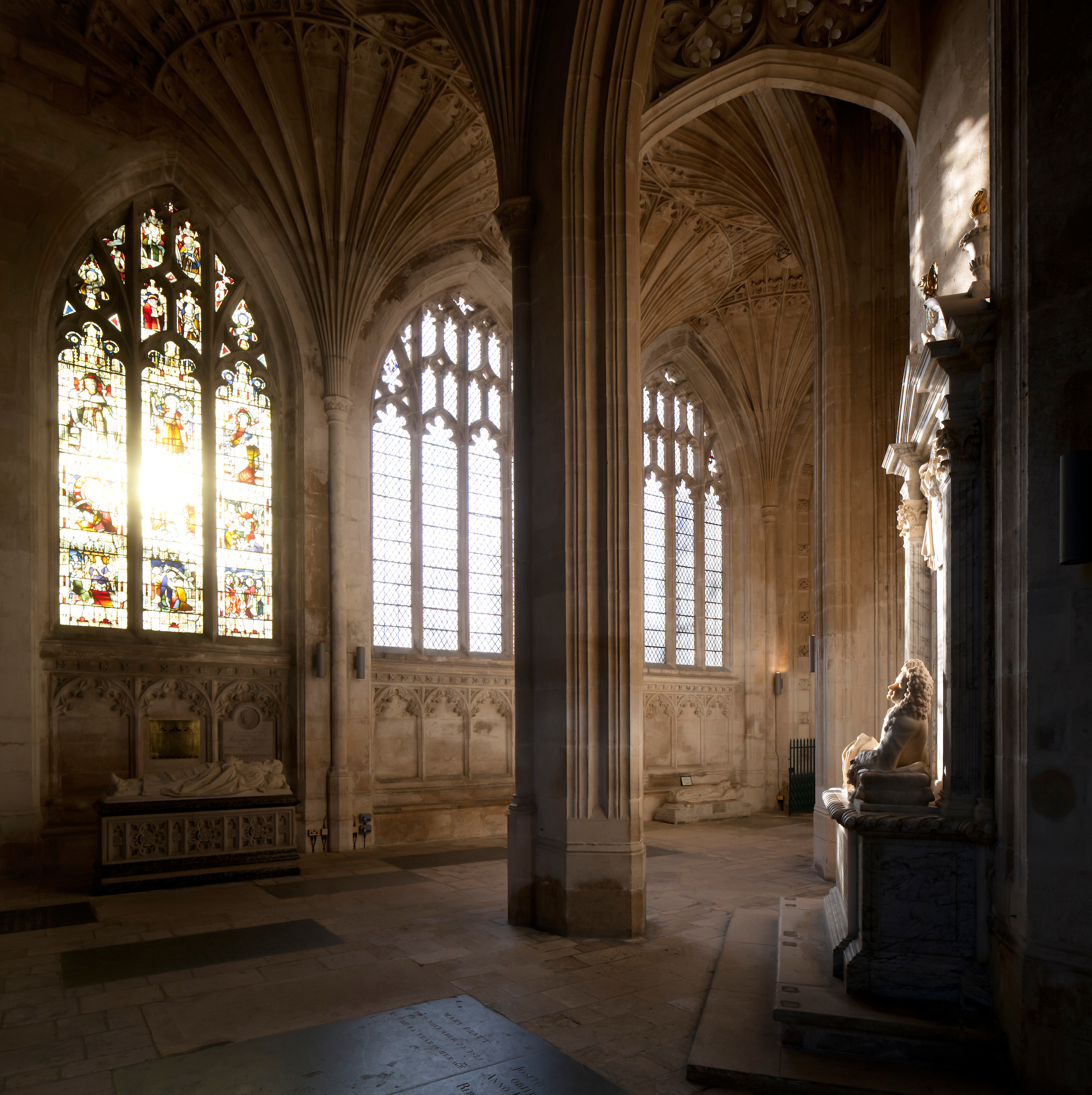
Words
"How will I pass the day? Why will I get up in the morning? And what about the things that are swarming all around at me at every moment? Who’s going to see them, record them, save them from oblivion? How will the world continue to exist if I don’t keep writing about it?" Helen Garner
Hotspots
It's good to be back on the road again in the new year. After a quick stop off to photograph St. Anno's, Lananno I hurtle on to the Brecon Beacons - to a church with a very special interior.
St. Ellyw's,Llanelieu
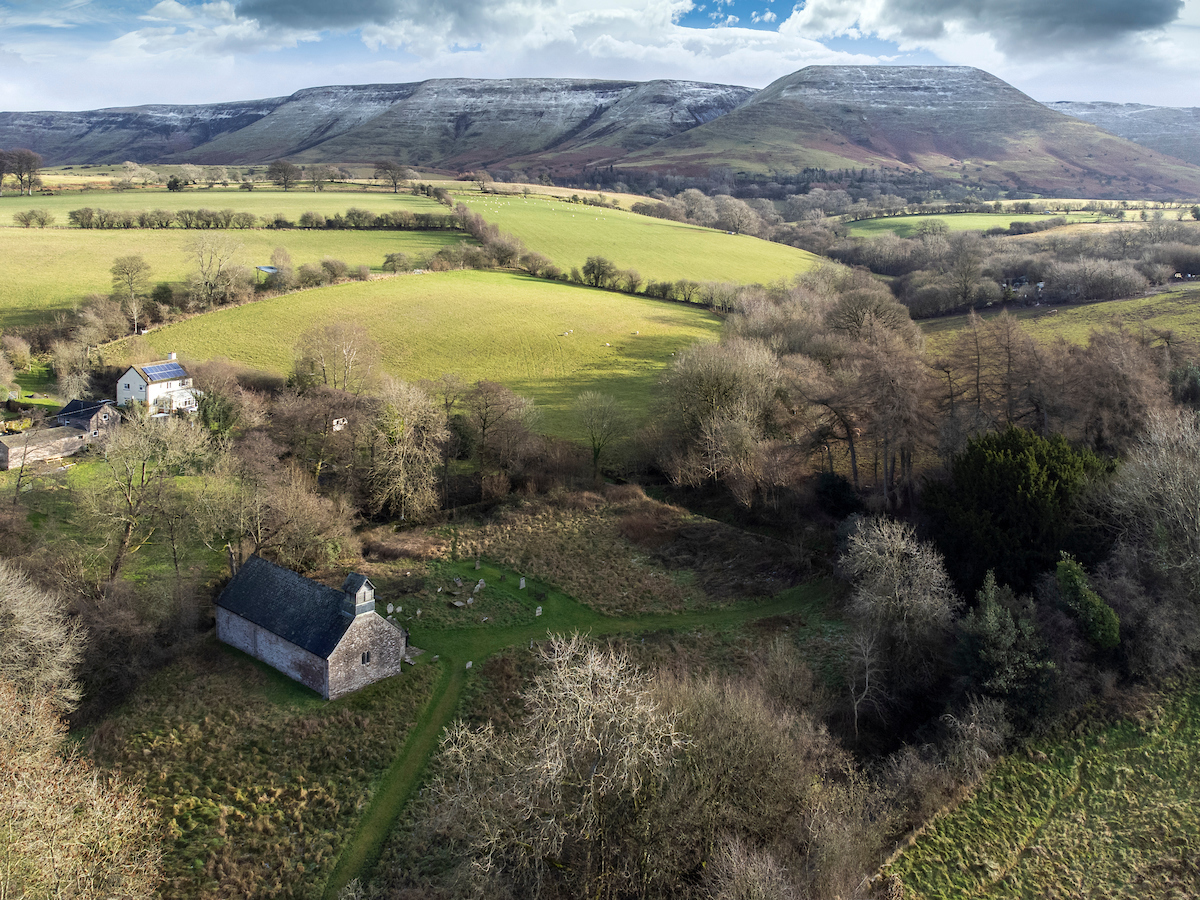
The road to St. Ellyw’s is a hollowed out single track - cut into the side of forests and fields. I sense that I’m getting closer to the church when the van starts to jitter across chevroned mud scatter, and soon the road dissolves into a farmyard with boundaries that are vaguely visible beneath the ochre clay that seems to abound in these parts.
The church lies within a scattered hamlet with oval shaped boundaries. I park next to the bridge over the brook and hike up the steep lane and position myself between the church and the Black Mountains looming and covered with a mantle of snow to the south. I always try and get a sense of a building before I photograph it. The boundary here is oval shaped, betraying a ritualistic landscape that is older than the church.
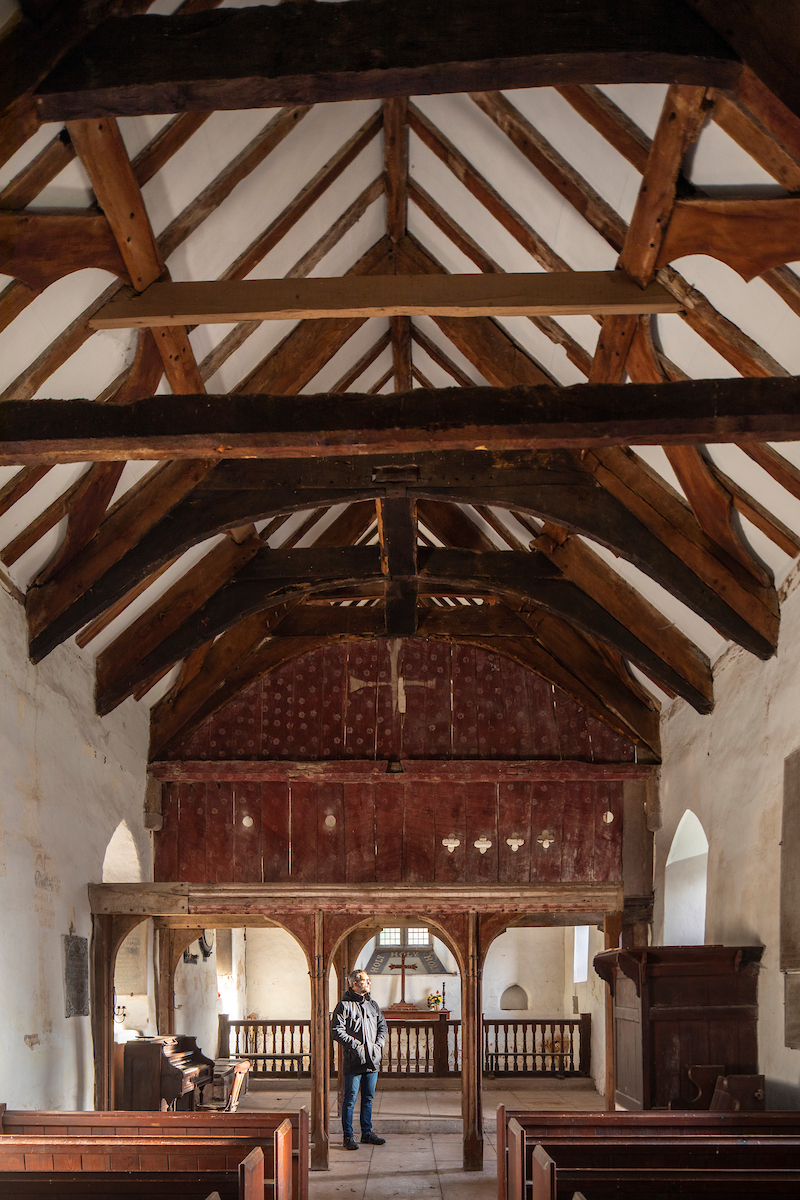
There's something special about entering a church. The best places evoke a feeling of transition upon entrance. There's no exception here. The view over to the east is divine: the medieval rood screen survives and is painted with ox-blood. Upon the screen is the presence of absence - a ghost-rood.
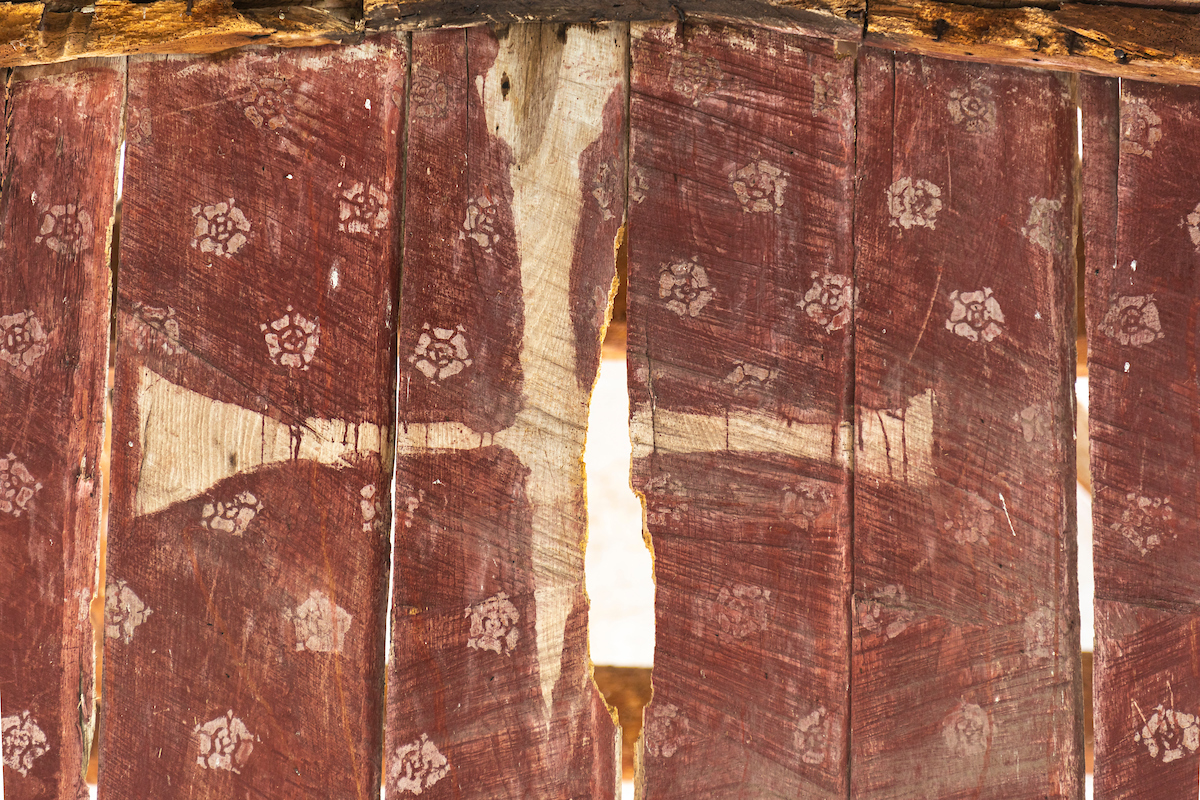
I notice that the door at St. Ellyw's is made of ancient wood, with a patina that's been curing for centuries. Once inside, I see a gap in the base of the door and a small hole half way up the door. A little later, whilst photographing a wall painting, there's some movement at the base of the door: a wren hops inside, slants its head at the tripod, and then flies up to the roof timbers. I realise that the hole at the base of the door is there because of local knowledge and not lack of maintenance.
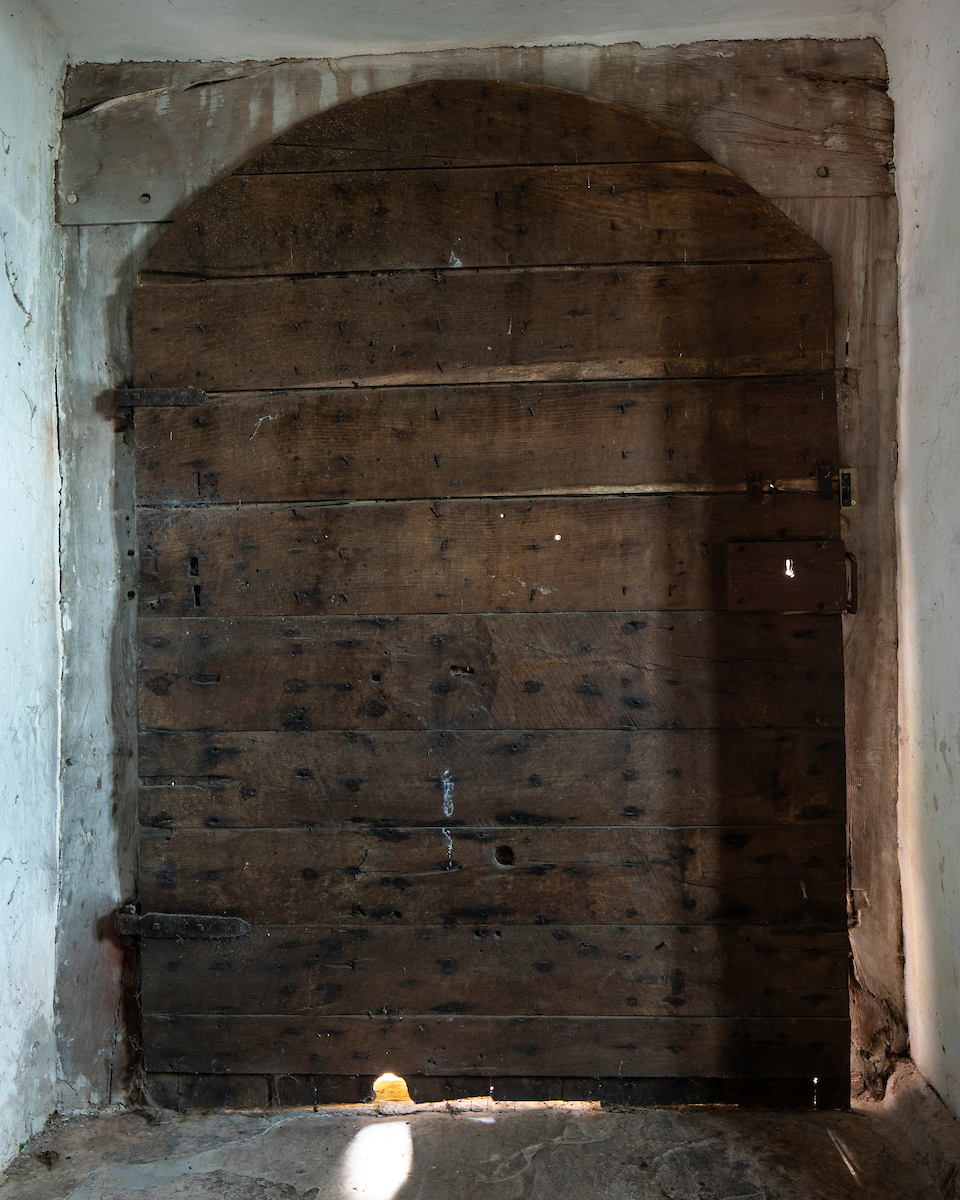
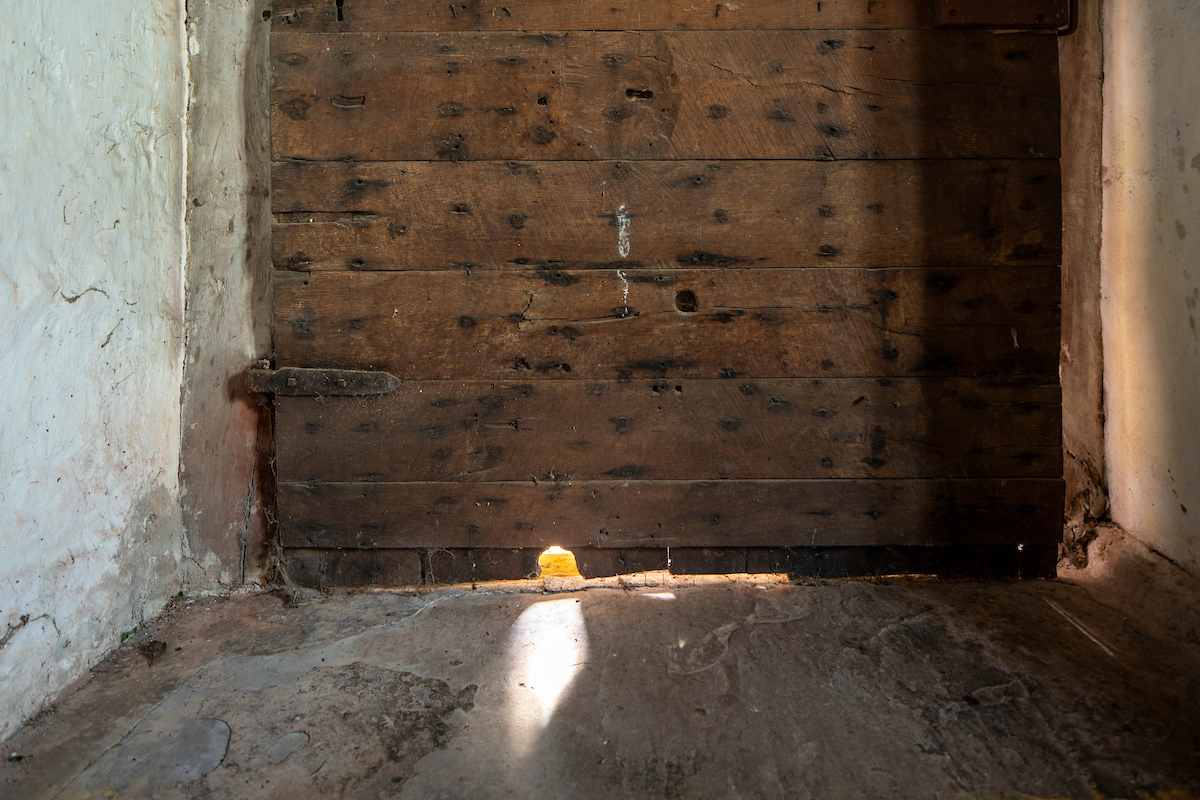
A few minutes after seeing the wren, a slender shaft of light appears from the smaller hole in the door, capturing the dust motes in its rays. I look to where it’s landed - an orb on the wall to the left of the font.
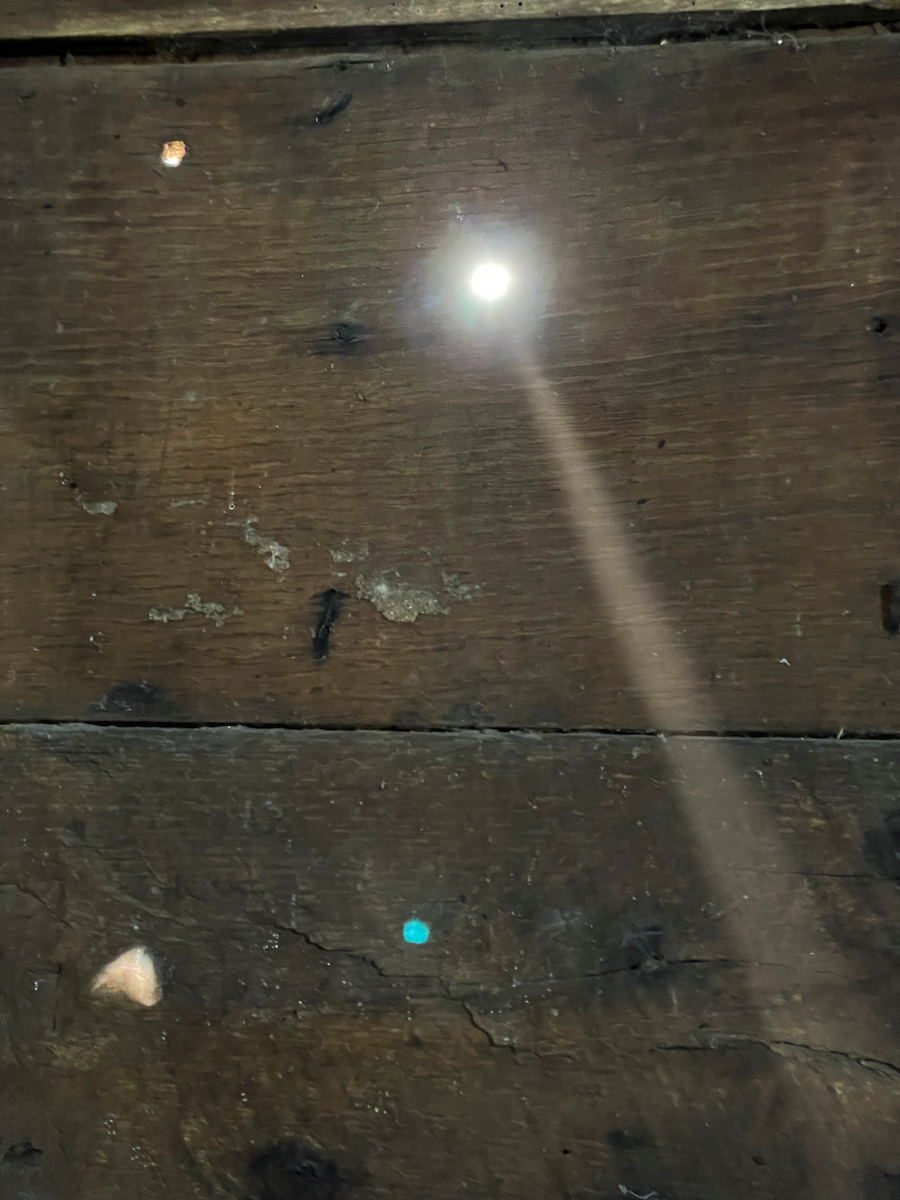
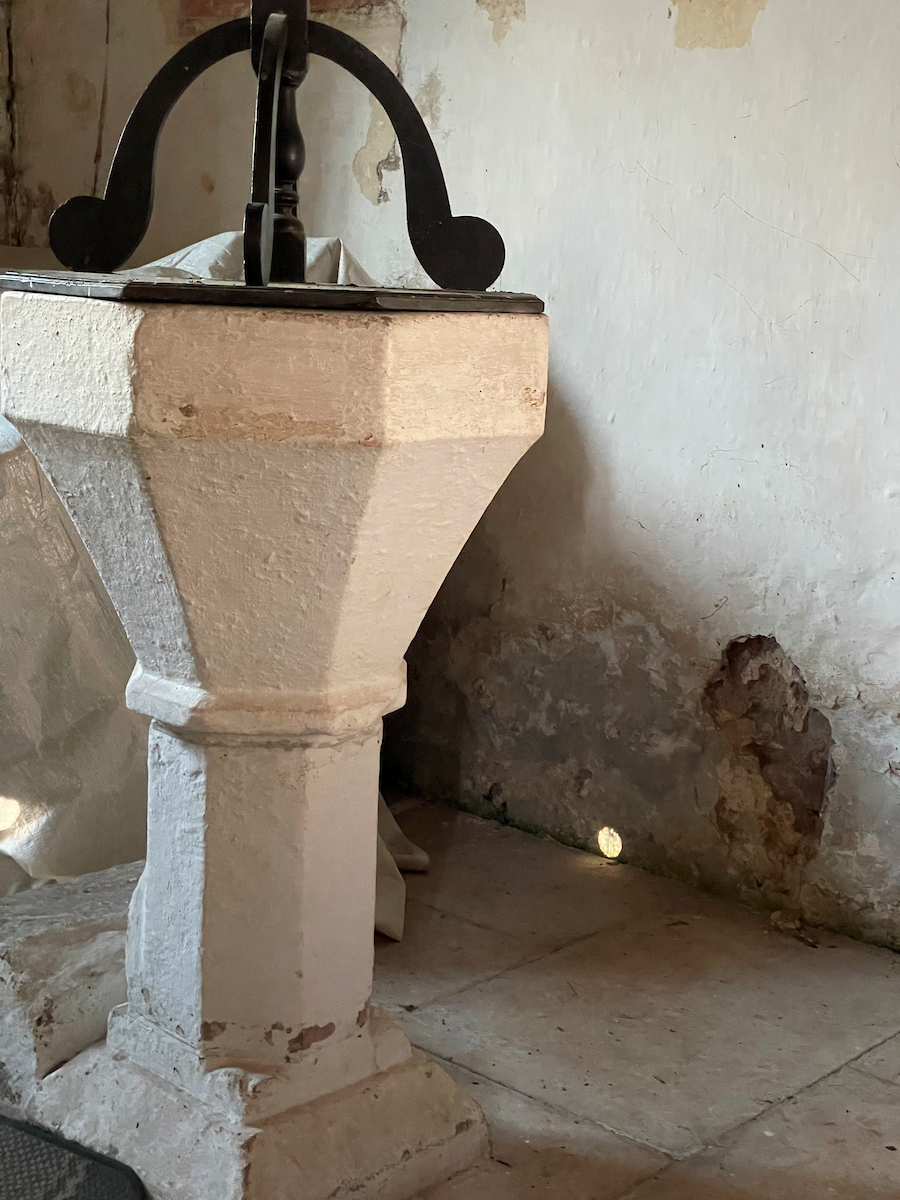
I keep checking back on the light shaft from the door. The orb has reached the base of the font. The north wall is now a sundial, the liturgy secondary to horology - the font is a gnomon.
As the day circles around I continue with my work, remembering the words of John Ruskin when he first used a daguerreotype to photograph the buildings of Venice. He felt as if he were carrying off the palace itself within his camera. I too feel like a magician in places like this, capturing the magic of this space within the confines of my camera - bottled within the sensor.
It’s only when the light orb reaches the shaft of the font that I notice some movement within its sphere. I bend down to focus in, and realise that I’m witnessing an act of magic that has mesmerised human beings for millennia. The world outside has been transported along this shaft of light onto the font, the traditional place of new beginnings. The clouds in sharp relief are moving at a pace across the orb at the base of the font.
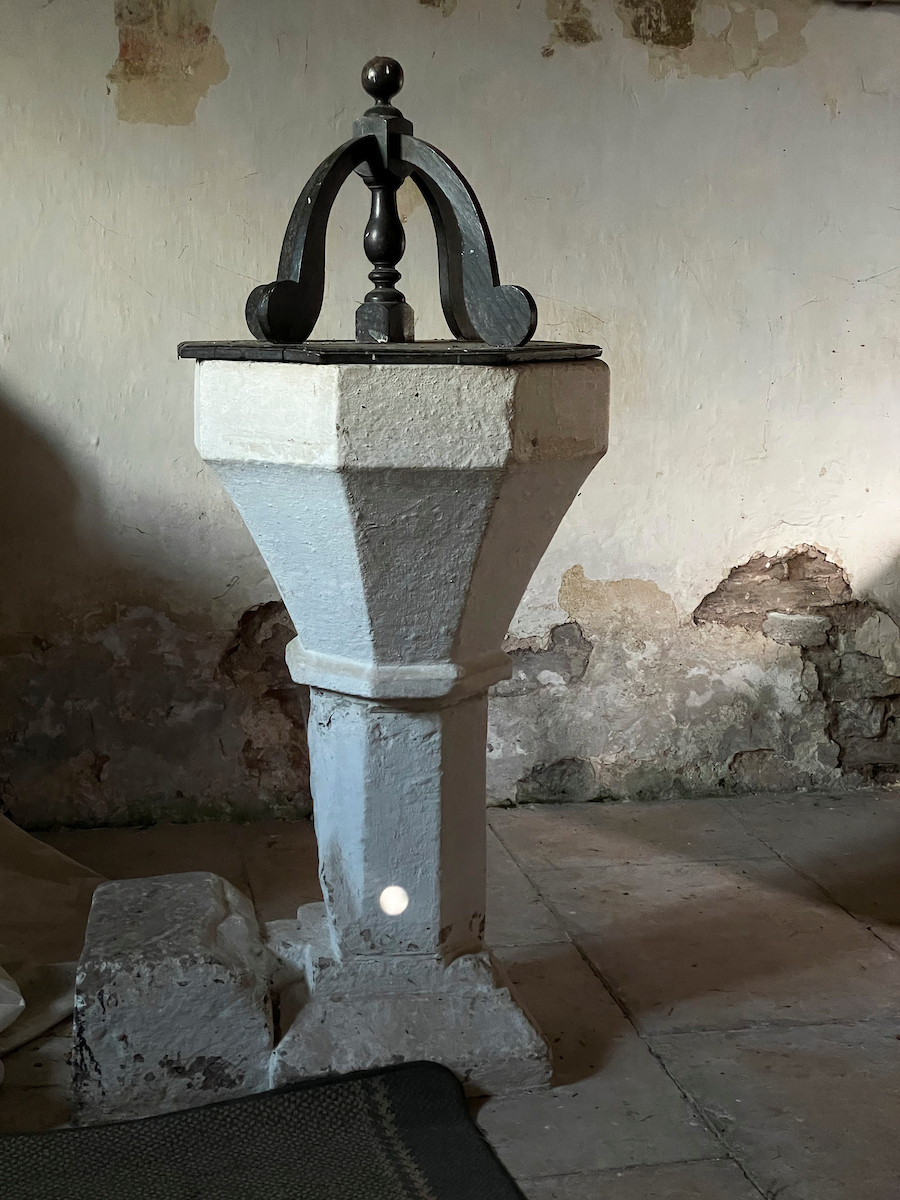
Momentarily, I feel a shift of perspective in this little church, shadowed by the Black Mountains. This precious incident of light has enshrined me within the intricate workings of a camera obscura. This little box with an ancient oaken aperture, has carried me off with the fixtures and fittings.

St. Ellyw’s Camera Obscura caught on film
Radcliffe, Greater Manchester.
A collective of creative's with experience of place-making has come together to breathe new life into place.

Supported by Bury Art Museum, artist Lee Crocker and myself are collaborating with a team of talented creatives, mapping out the material culture of Radcliffe, a town that lies to the south of Bury.
It has a fascinating medieval history, but later developed into an industrial town around a bend in the Irwell, south of its original medieval epicentre.
Our aim is to take Radcliffe's fingerprint and produce an art work that celebrates Radcliffe's identity and contributes to its future development.
Get to know your place intimately. Search out particularity and patina, add new layers of interest.
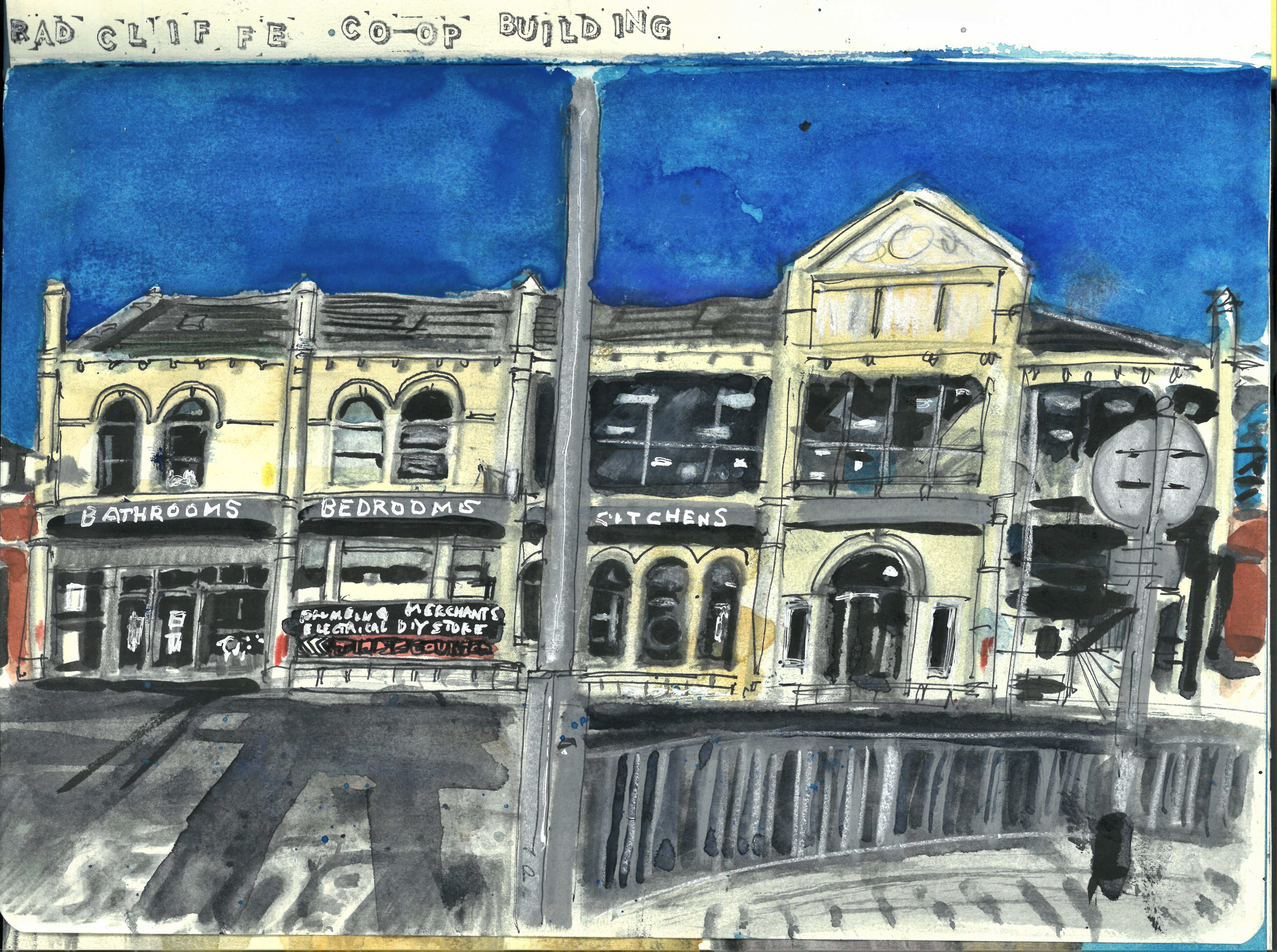
Here's our twitter profile.
SpiritOfAPlace (@spirit_place) | Twitter
The latest Tweets from SpiritOfAPlace (@spirit_place). Bury Art Museum’s Spirit of a Place is seeking out Radcliffes material culture aiming to champion it’s unique identity and help give pride of place in the town. @BuryArtMuseum
If you're interested in developing something for your locale - drop me a line. Happy to help.
Once a place loses its distinctiveness, it loses its soul. Distinctive places pay attention to the detail - the roof tiles and windows, the brick banding on a wall, the curious street name, the micro-patterns and patina. Places that record, re-invigorate and celebrate their distinctiveness contribute to the wellbeing of its inhabitants and visitors.
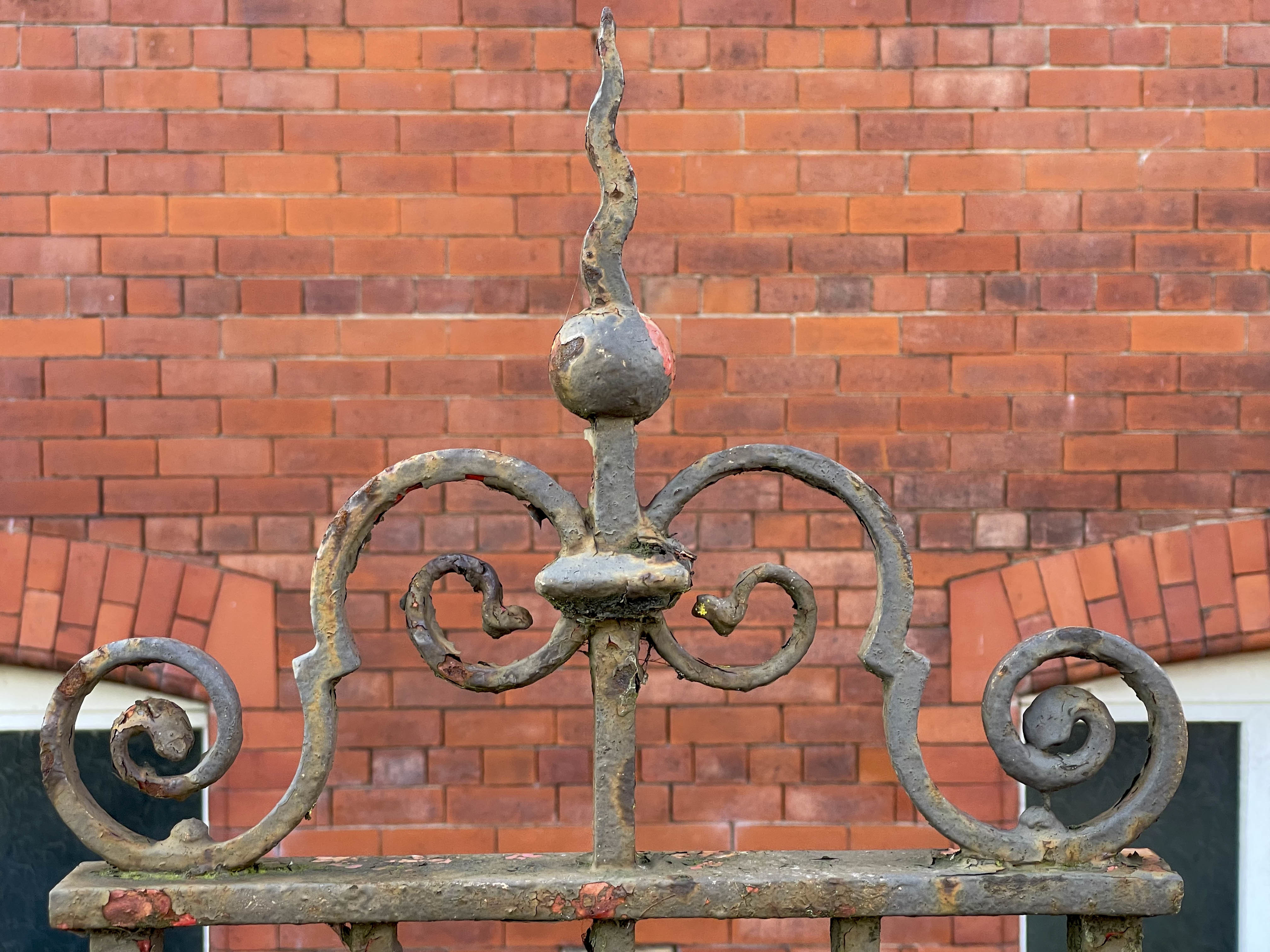
Vanlife
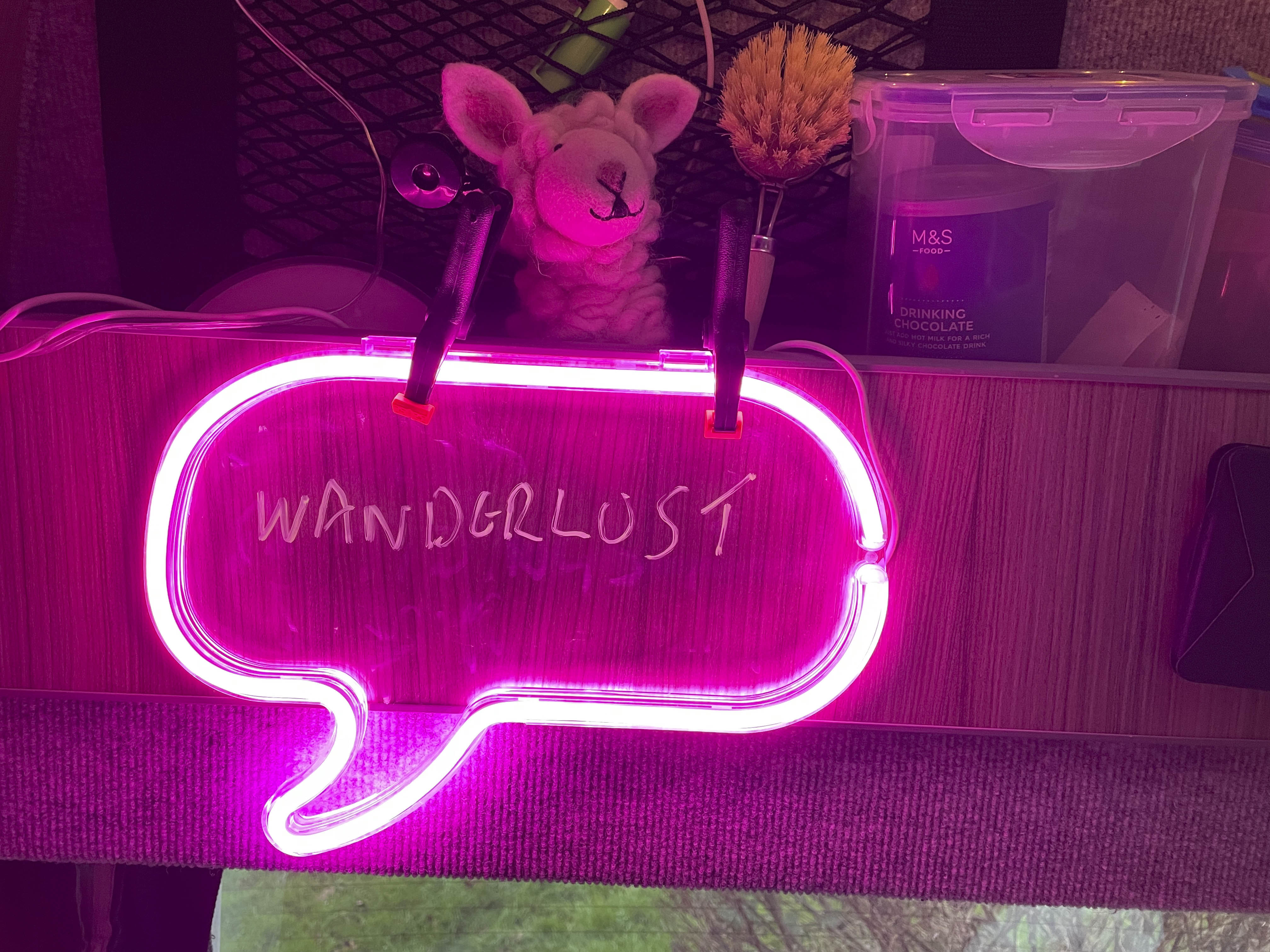
Next Woody is heading down to London and will be staying over near Welwyn Garden City, then on to Dalston and Westminster. More next week.
Cold Evenings
Here I am, updating this digest this week - the evenings have been cold, but I do have a Webasto heater in the van that blows hot air - it's also on a thermostat - so it keeps the van warm and toasty at night. No, I'm not wearing a smoking jacket - I'm wearing the ingenious Rumpl puffy blanket. Perfect for cold winter nights.
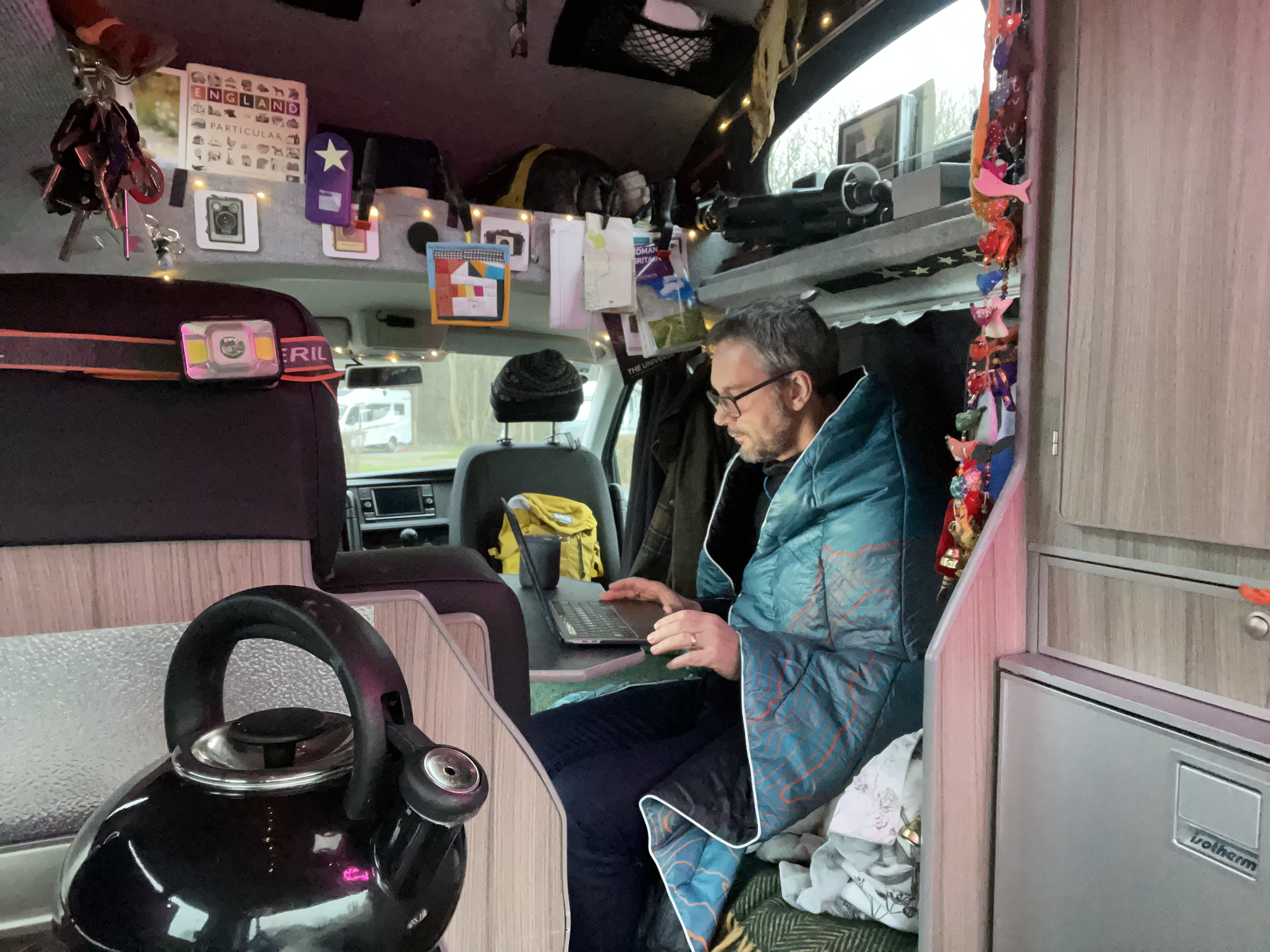
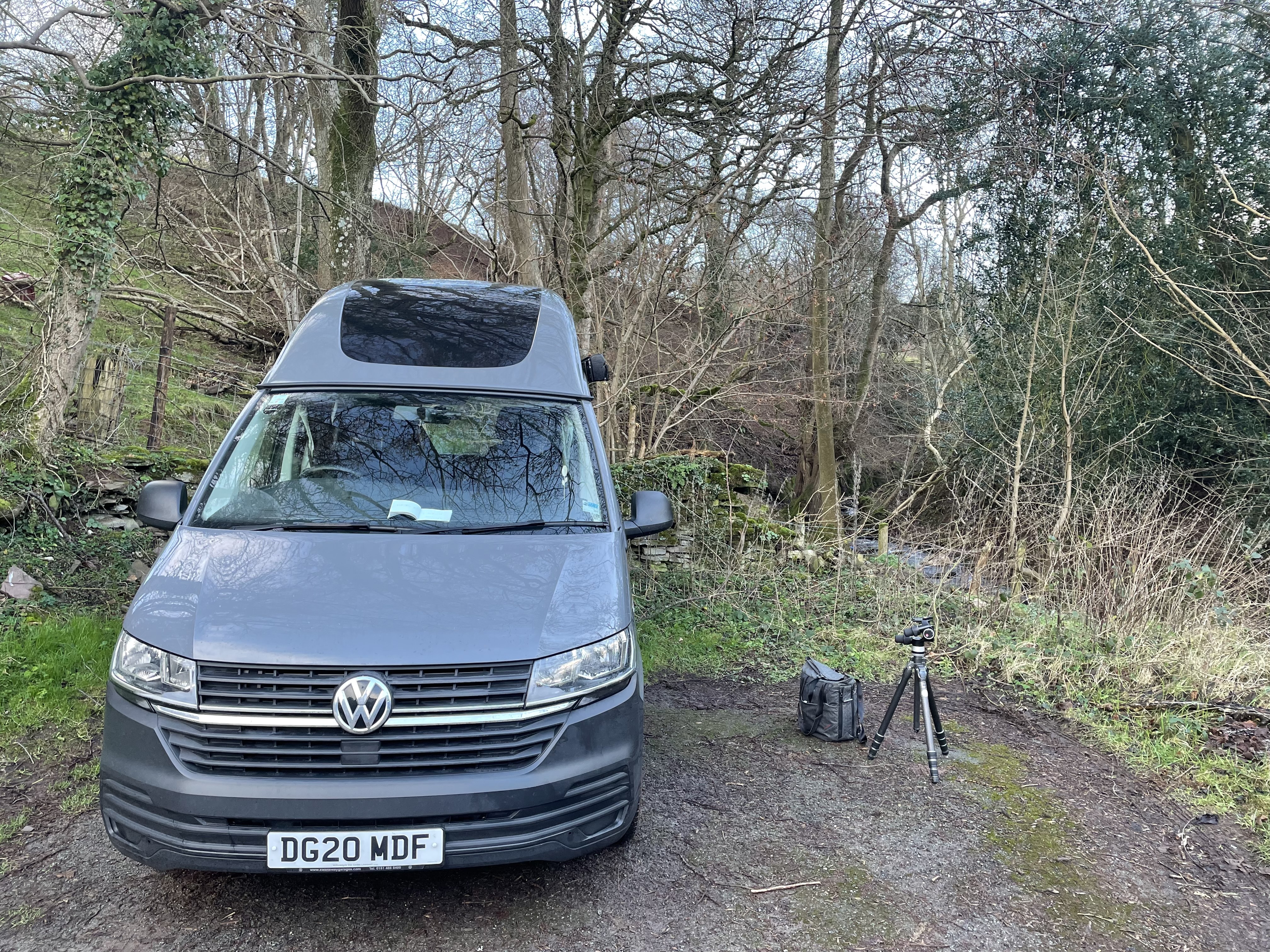
On My Coffee Table
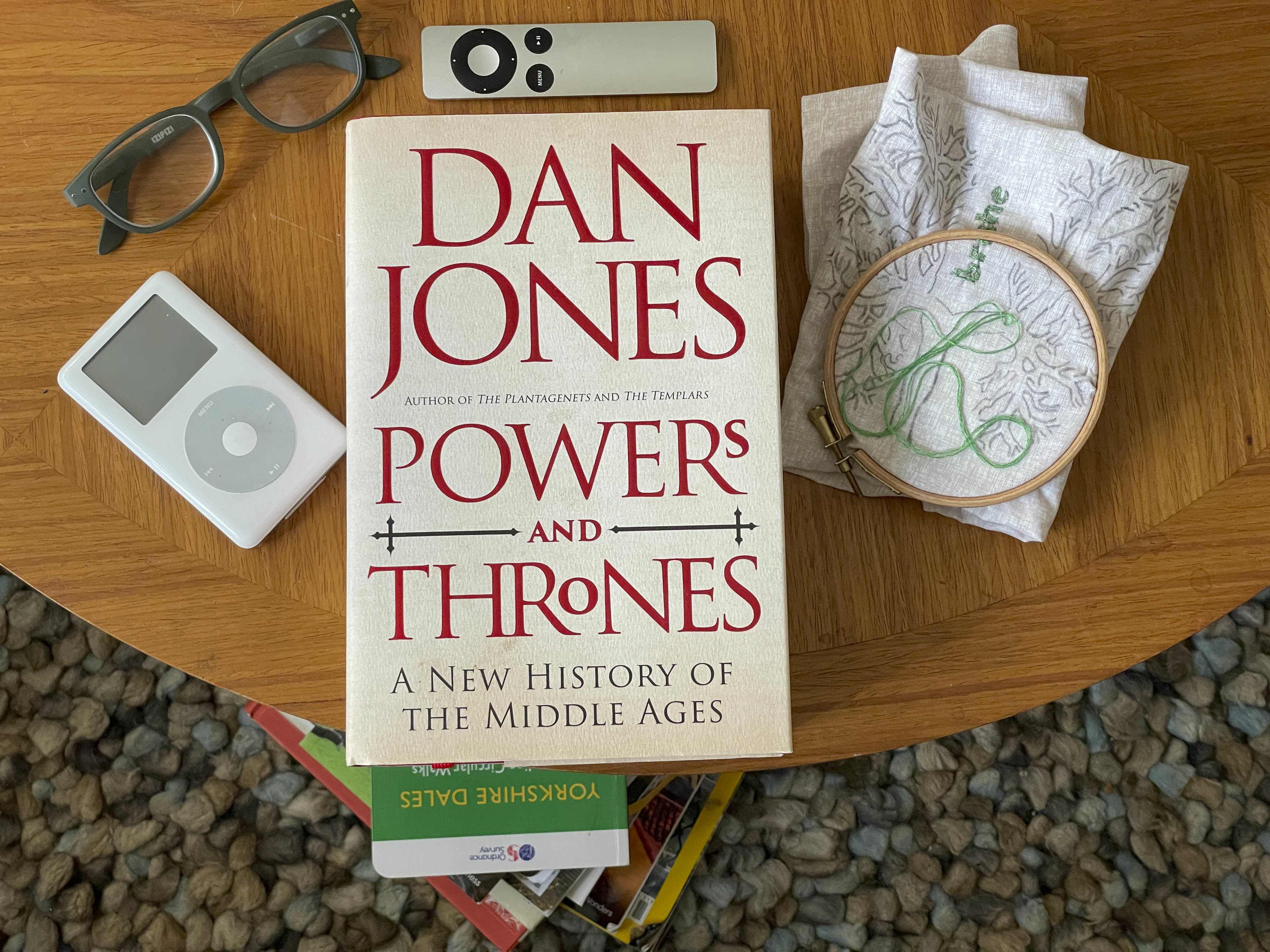
A Christmas present from Emily, my daughter. I just keep staring at it - can't quite summon up the courage to pick it up.
From The Charo's
From a charity shop in Much Wenlock £3.50.
It's good to get a contemporary view on modern architecture as it was happening - before it gained the opinions we now have.
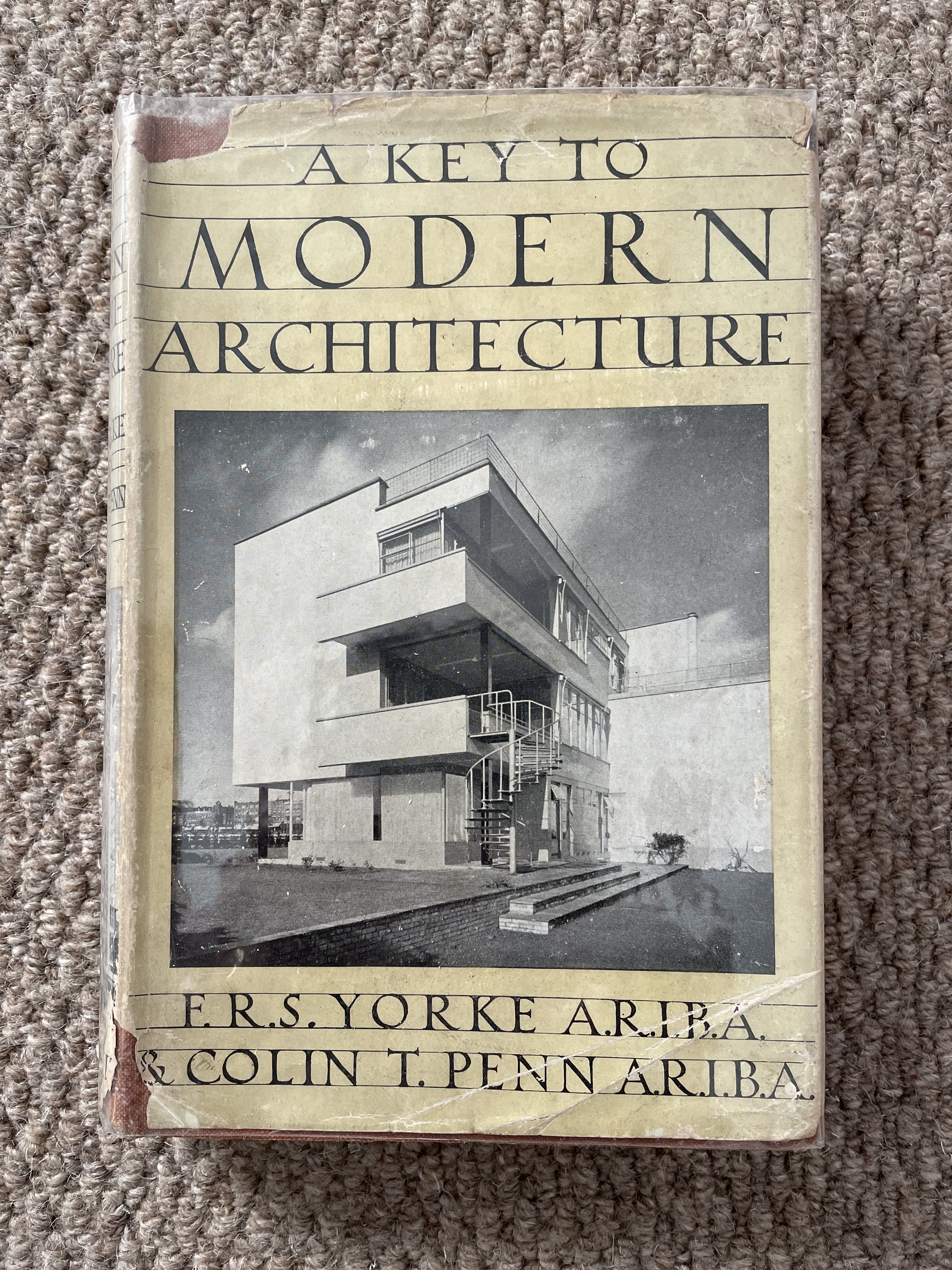
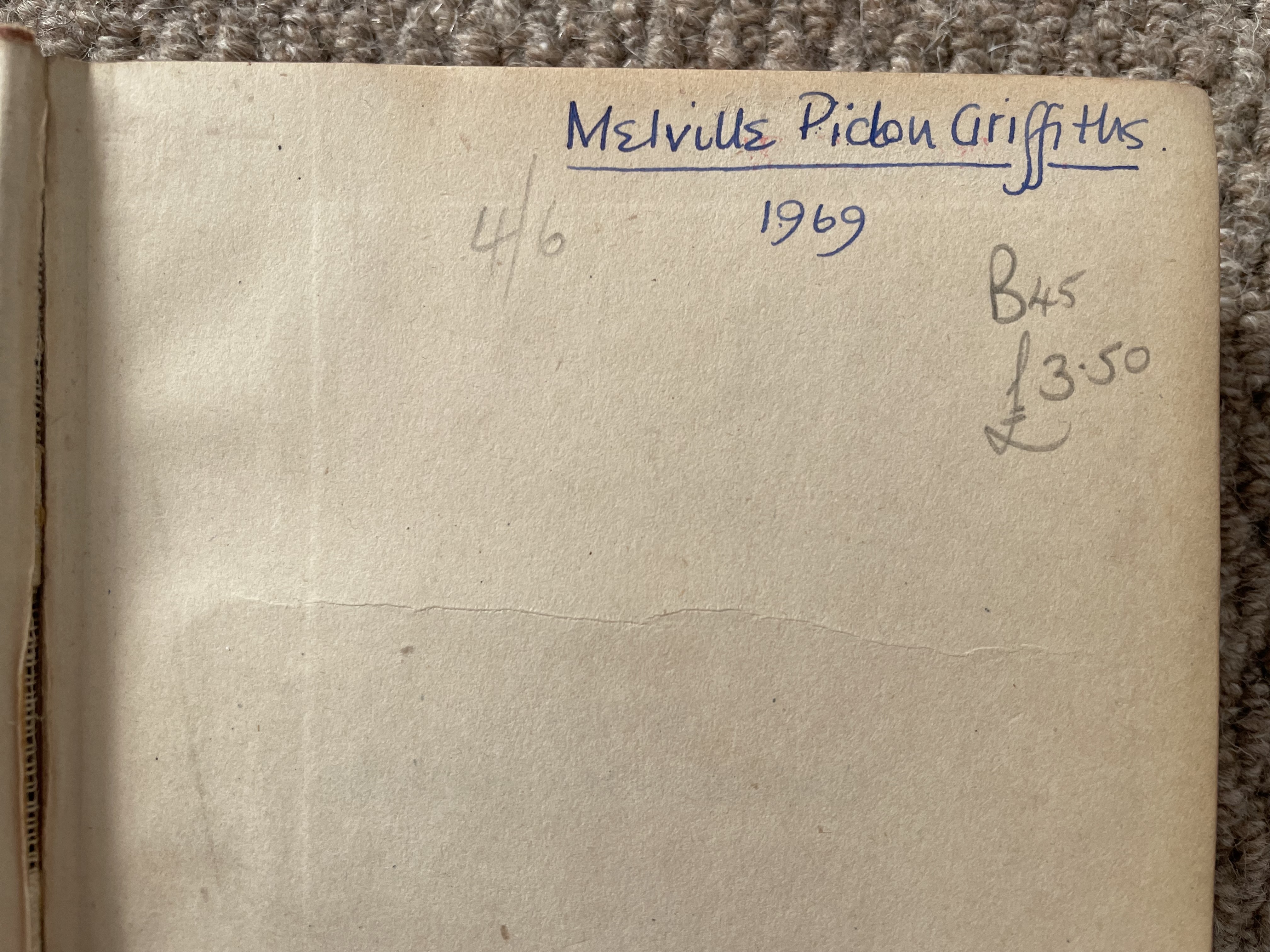
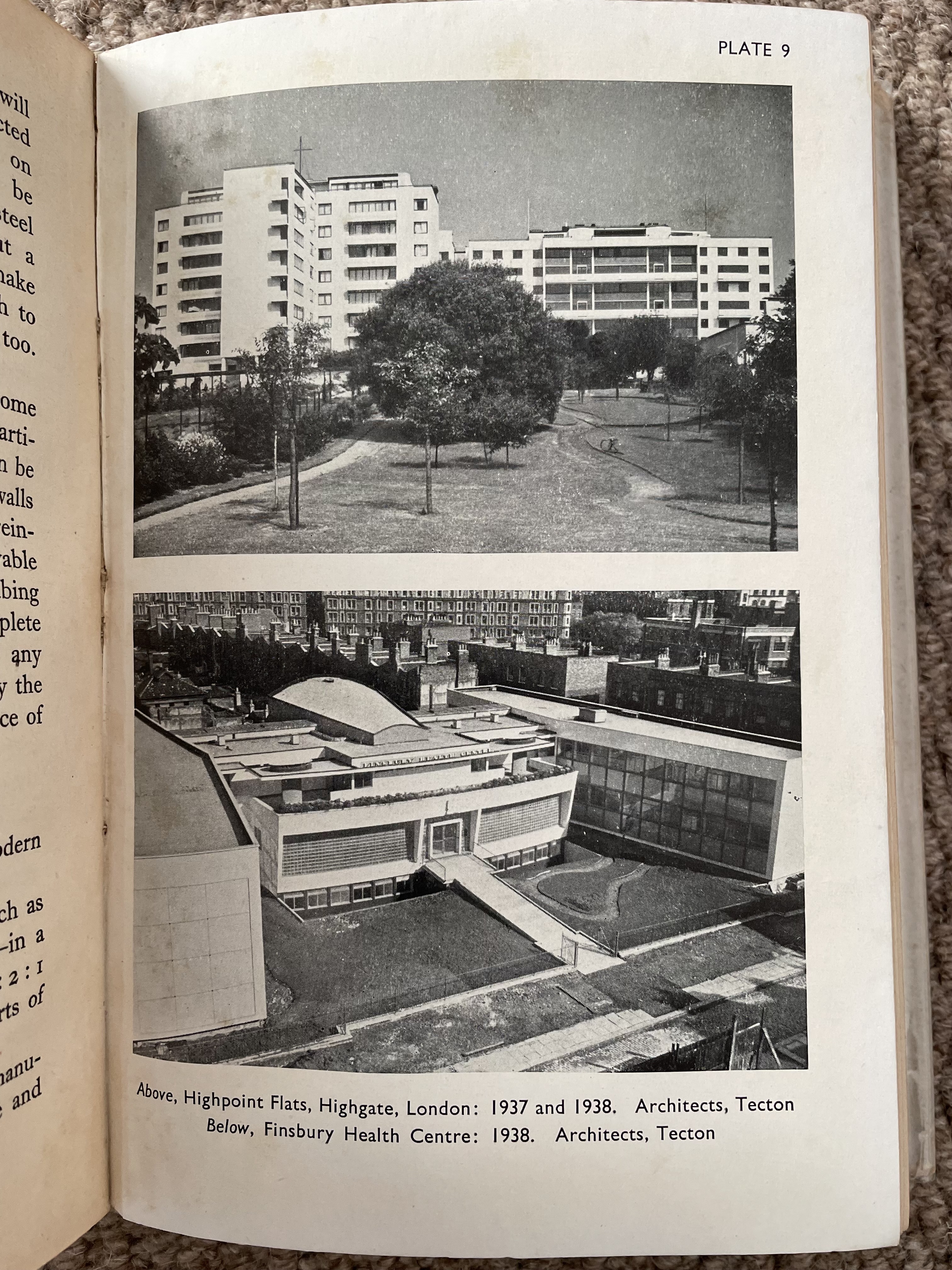
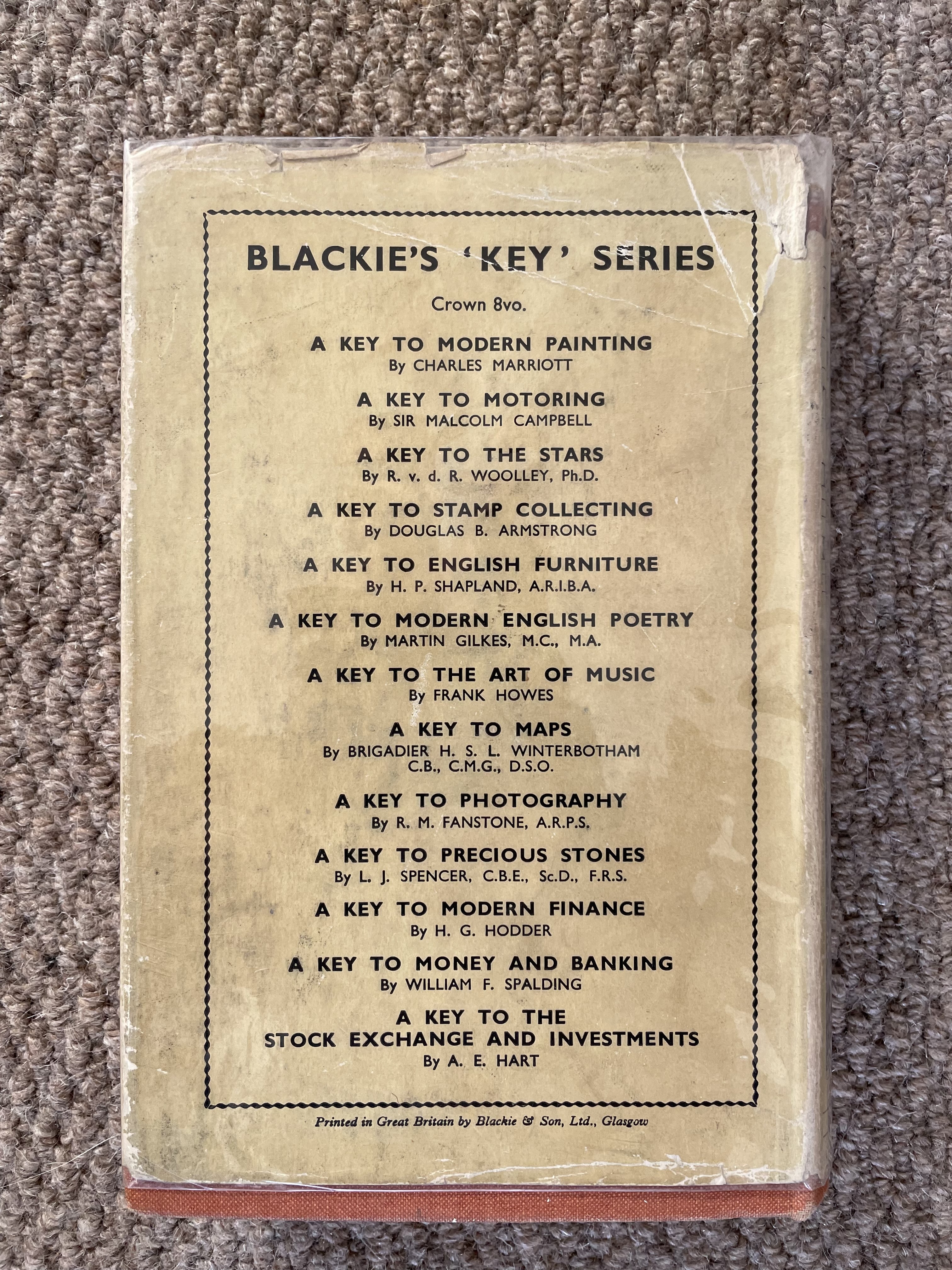
Bookmarked
David Baddiel: The book that changed me? John Berger’s Ways of Seeing | Books | The Guardian
The comedian and writer on growing up with Billy Bunter, the beauty of John Updike, and why Middlemarch is the greatest novel written in English
📸This is also a book that changed my perspective on the world.
Sounds
BBC Radio 4 - This Union: The Ghost Kingdoms of England, East Anglia - Sutton Who?
📸 Highly recommended. Listened to this on my travels in the van this week. Did you know that the king buried at Sutton Hoo (possibly Raedwald) had UK size seven feet?
Ian Hislop explores the story and legacy of four great Anglo-Saxon Kingdoms of England.
Observations
Apotropaic Marks
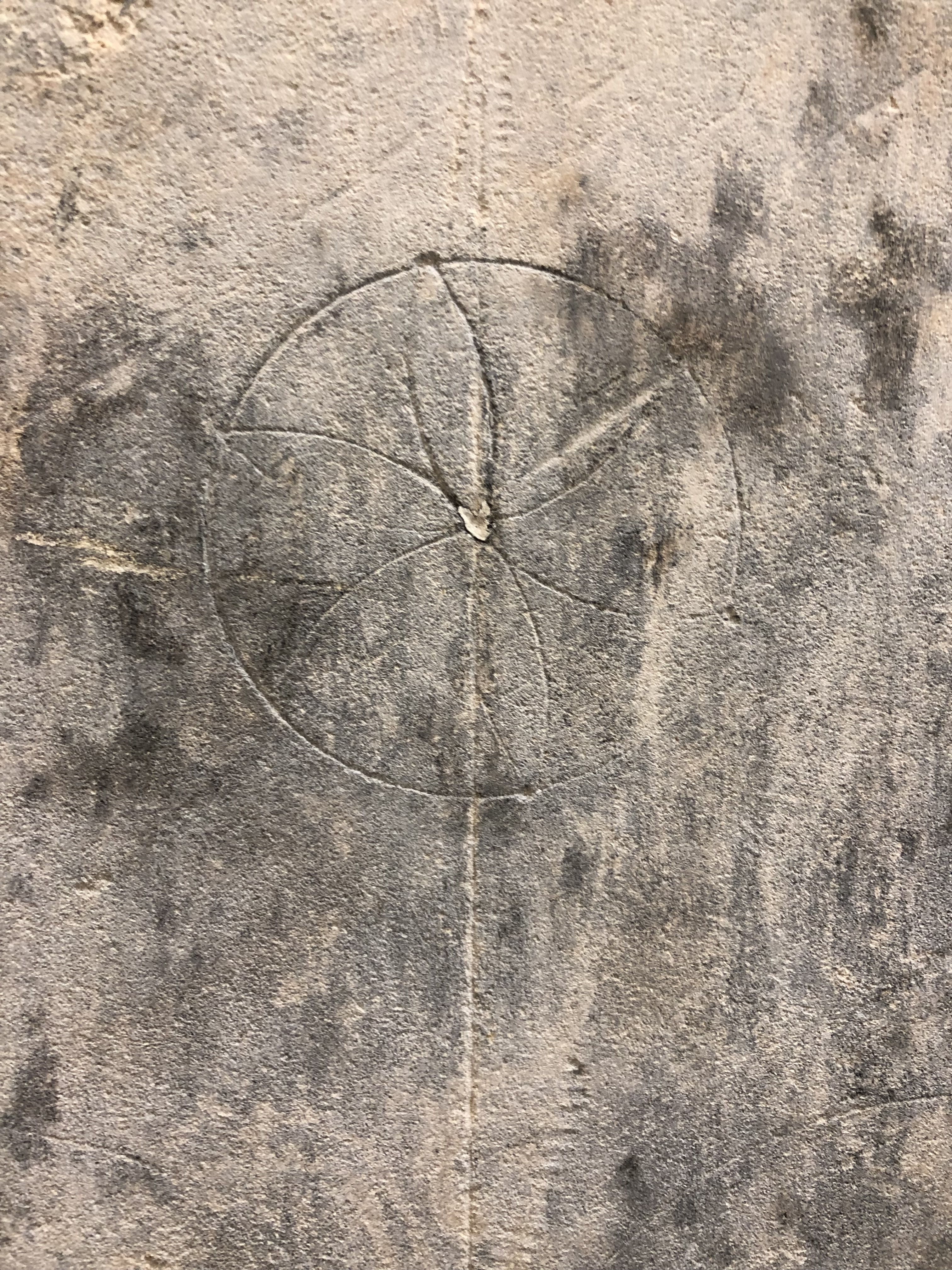
It is perhaps in the variety of marks and their concentrations in churches that we find the strongest connection with non-christian beliefs. I’ve found them in large concentrations around doorways and openings, but also on fonts and arcading nearest the west end of the church. Alongside consecration crosses (used at the founding of the church), I’ve photographed hexafoils and ‘W’ ‘Virgo-Virginium’ symbols - the unwritten beliefs of generations of people fossilised in stone.
Kieth Thomas in his book ‘Religion and the Decline of Magic say that ‘helplessness in the face of disease was an essential element in the background to the beliefs with which we shall be concerned. So too was vulnerability to other kinds of misfortunes, particularly when it came suddenly. Next to plague, perhaps the greatest single threat to security was fire.”
St. Augustine’s in Brookland, Kent has a C13th detached wooden bell tower with a lattice work of timbers on the interior. Many of the timbers have flame-shaped candle marks burnt into the wood, thought to be an act of inoculation against fire. It was only after I reviewed some of the photographs of the candle marks that I noticed faint symbols (runic in nature) etched into the wood next to the marks.
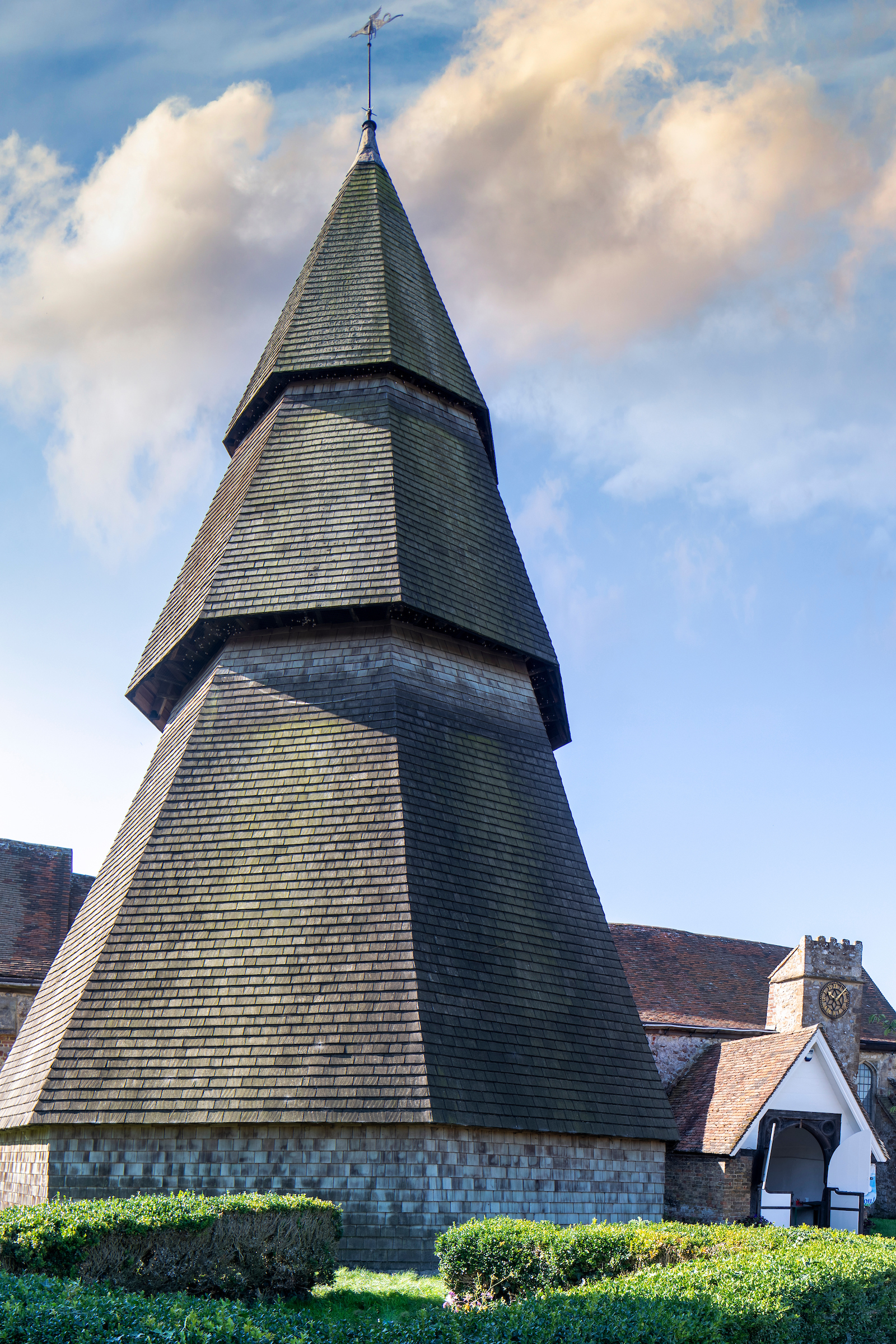
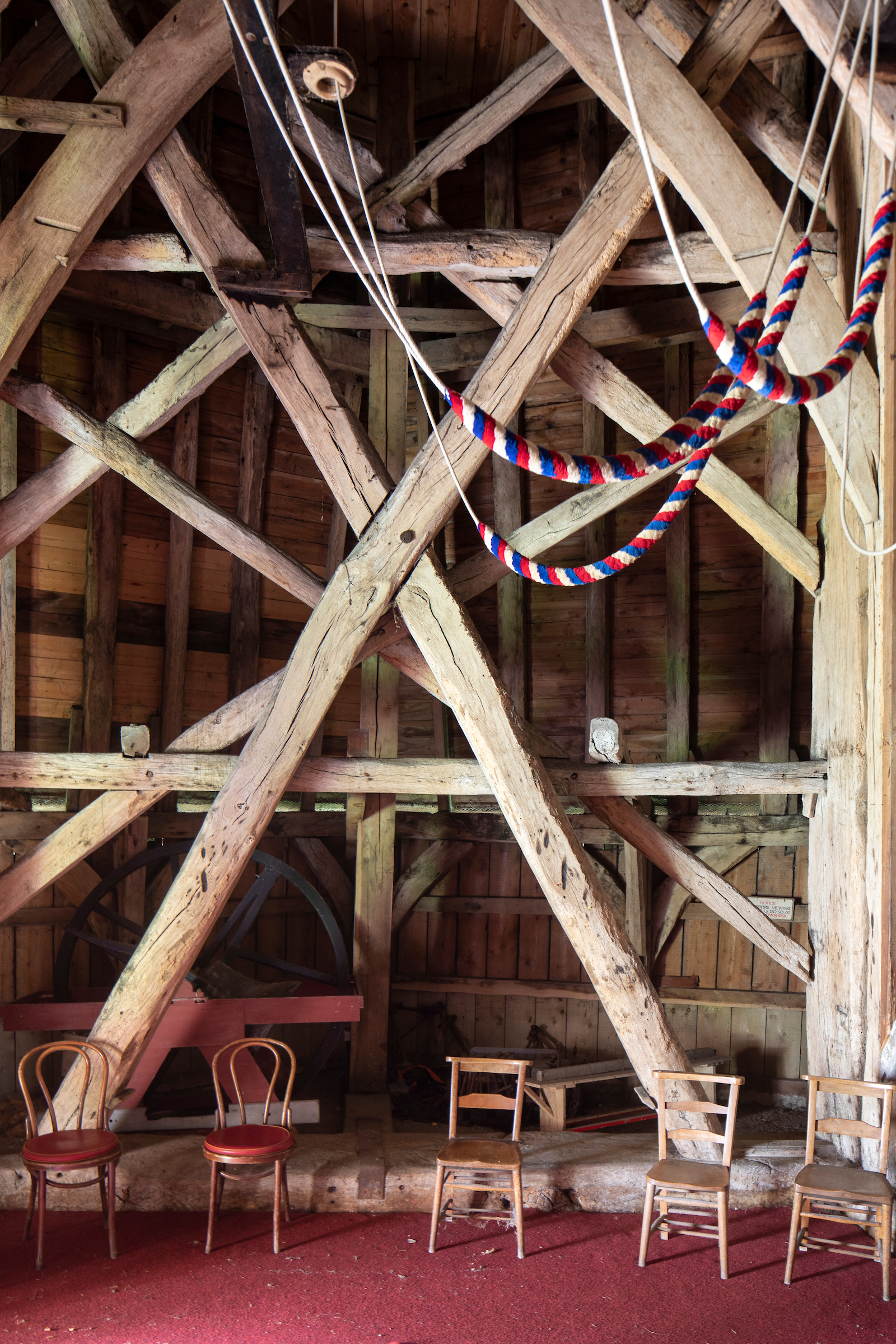
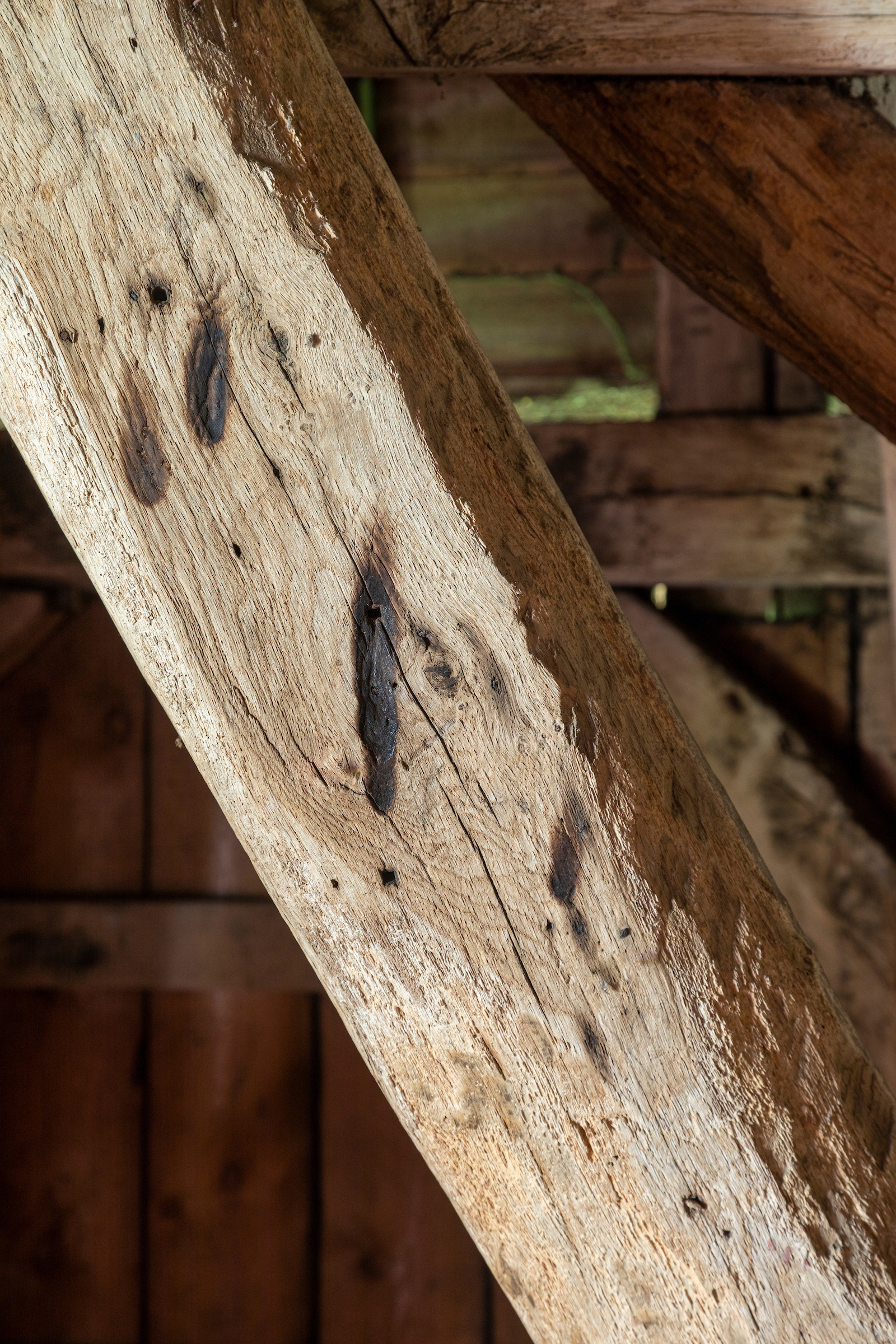
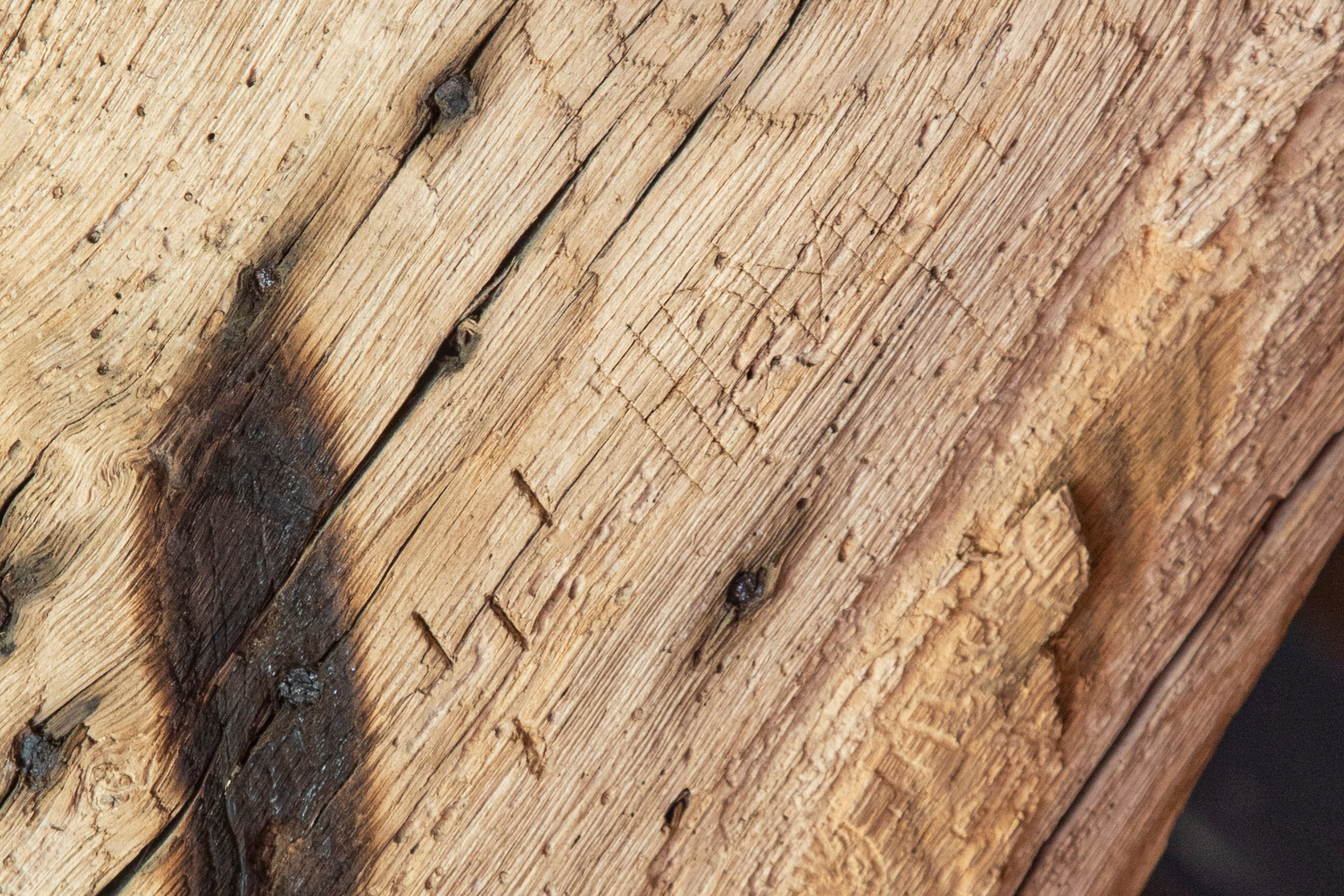
Apotropaic symbols have also been found on church bells, and it has been speculated that their sound was also apotropaic in nature - their reach enabling an audible ring of protection. Intriguingly a recent project to mark out the audible geography of parish bells in Ewelme, Oxfordshire found that the bell print mirrored the original parish boundaries. I’m reminded of my research into Micklegate, York where some unusual Roman clay ridge tiles were found with large holes in one end. They were thought to whistle in the wind and were thought to be apotropaic in nature. I can only imagine Roman York, behind its walls, during a storm - hundreds of open-mouthed ridge tiles hurtling back abuse at the storm.
Our churches portray the helplessness and vulnerability of our ancestors. The marks aren’t just geometric scripts, or cursive grammar - they are the vowels and consonants in an unspoken story that spans numerous generations. When I sit with a coffee and sift through the photographs I’ve taken of the symbols, carvings and orphaned shrines, I’m struck by how the fabric of our churches, in conveying a matrix of visual stimuli, reflects the humanity of people thought to have escaped the written record.
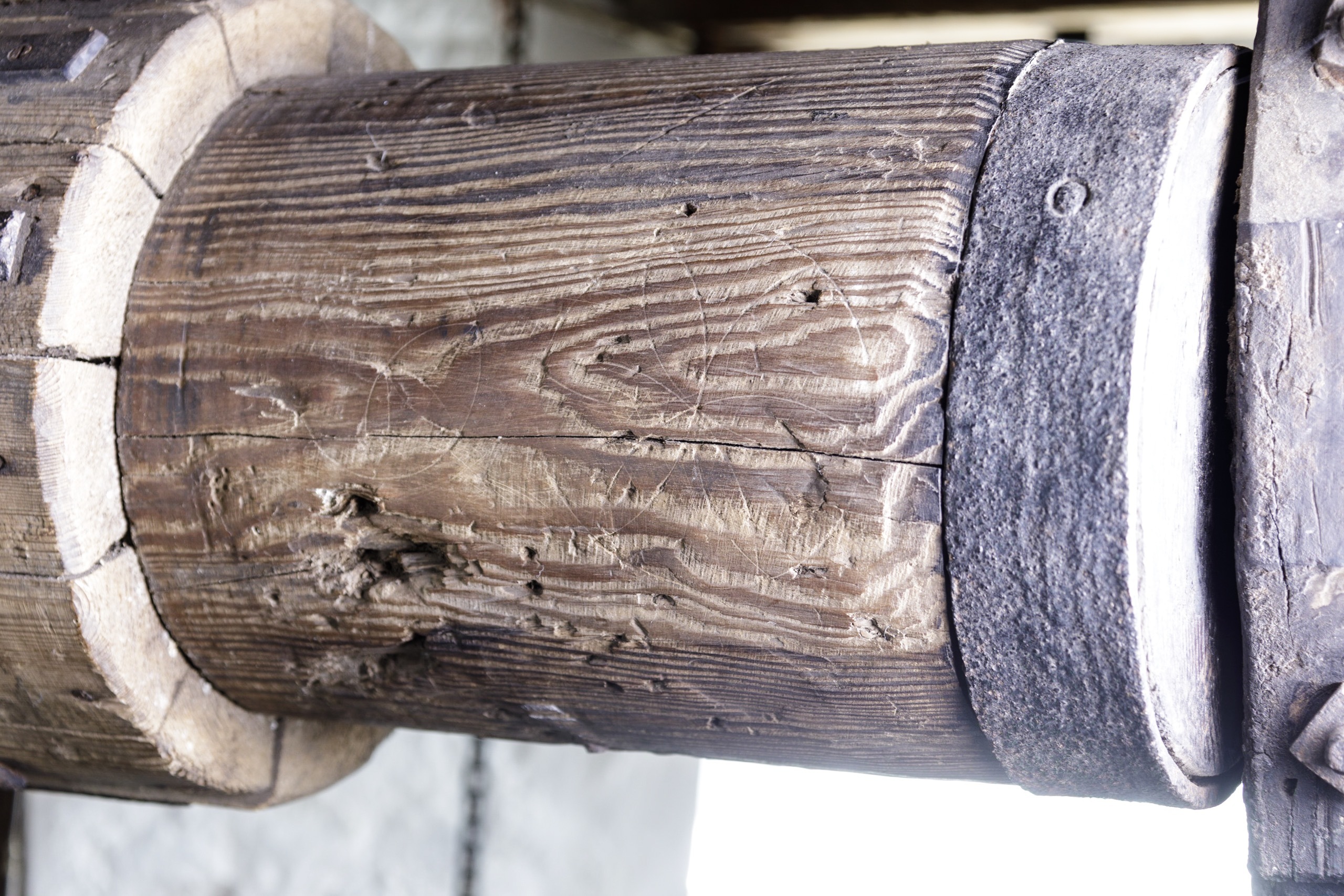
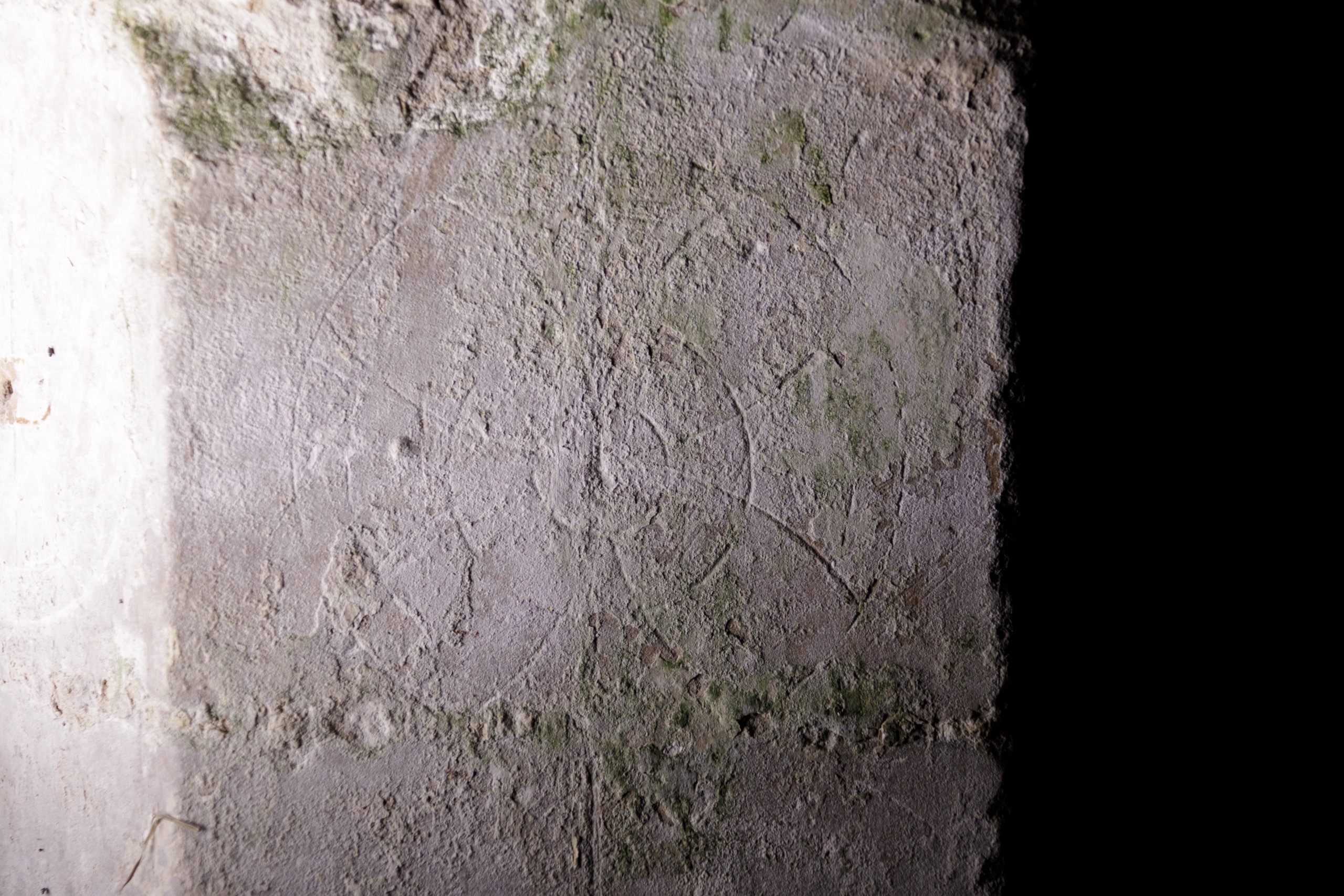
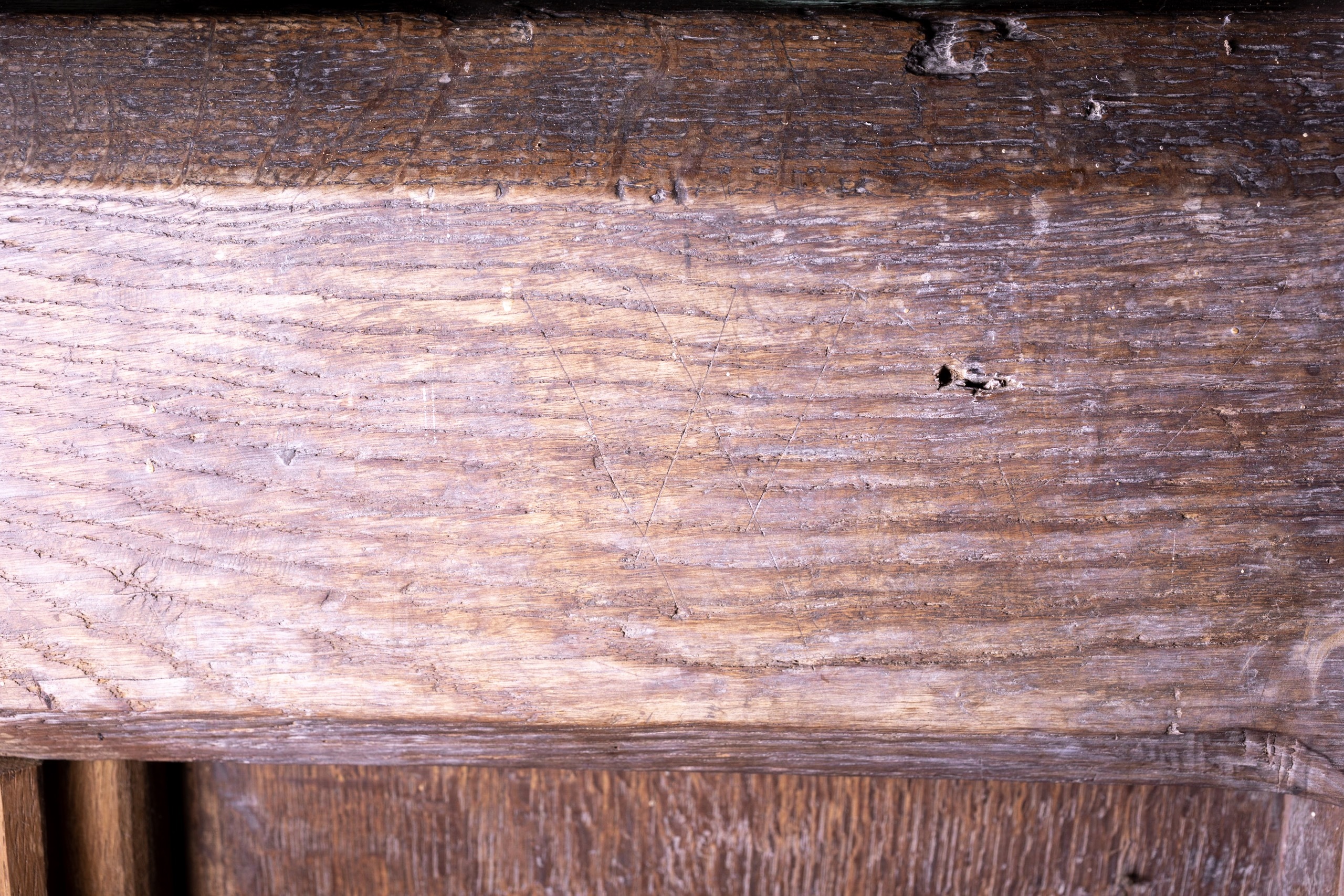
From the Twittersphere
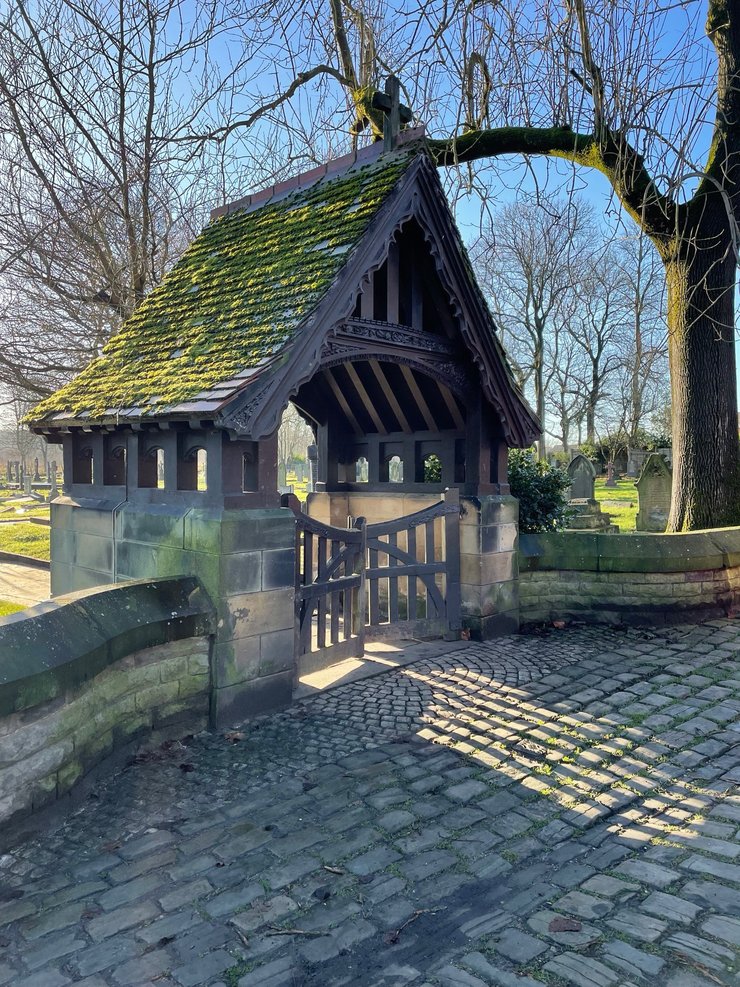
SpiritOfAPlace on Twitter: "Loving the Lychgate at St. Mary's Parish Church in Radcliffe - there are thousands of them all over Britain - each with their own design. This one is our fave. Its name comes from the old word for corpse - 'lic'😬 📸 by @fotofacade
Become A Member

I love creating this digest - it’s a labour of love - and it remains free to all - posted out on a weekly basis, more often than not, from my travels in my van. It documents my engagement with our increasingly threatened historic built environment (heritage). I help others form attachments, ties and obligations to place.
From a Victorian trading shack in Oregon, USA to a medieval church in Stratford, England, our heritage is a vital part of our wellbeing - it nourishes us and contributes to a sense of identity. The aim of this digest is to underpin the significance of our heritage and share it with others to confront creeping baseline syndrome and help others develop new ways of seeing and interacting with the historic environment.
It takes a day every week to produce this digest and you can opt in to support my work by becoming a member. There are some juicy member benefits too - become a member here.
Thank You. 📸🚐🏛
Thank You
A huge thanks to those that have signed up for membership.
As well as the weekly Digests, you’ll also receive an exclusive ‘Patina’ monthly digest at the end of this month. Here you’ll be able to glimpse insights into how my book is developing (with extracts) and also get a link to your free digital download.
And Finally...
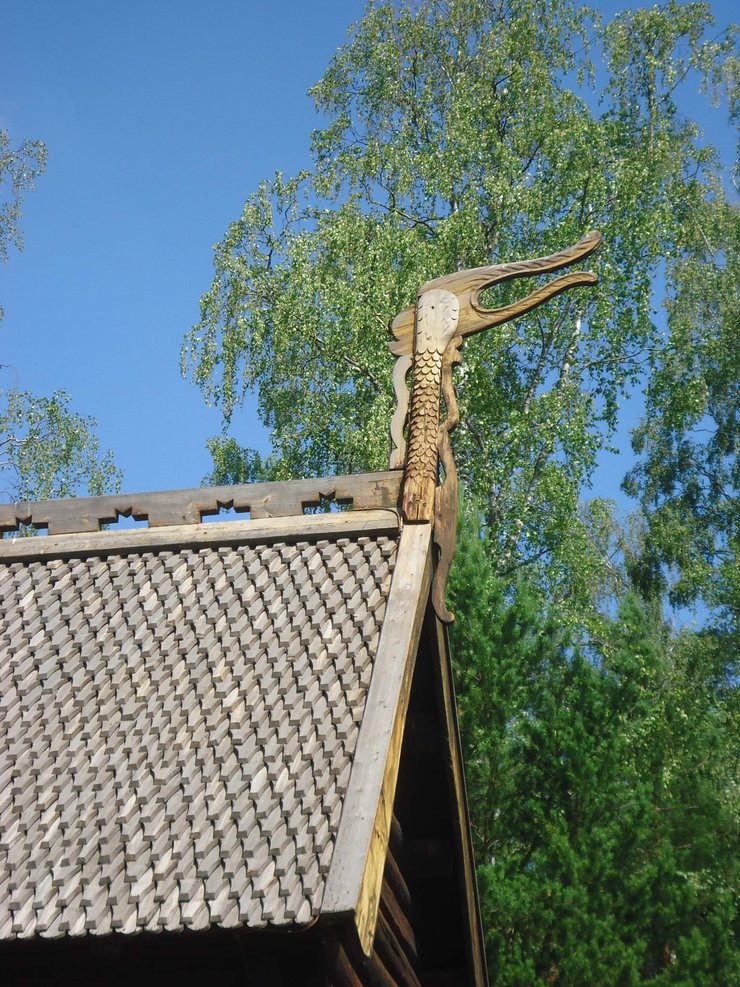
Trond Ellefsen on Twitter: "A Viking Norse Mythology Dragon on a Christian Stave Church in the High Middle Ages.… "
I love this depiction of a dragon posted by Trond Ellefsen - he's well worth a follow. The shaping of it reminds me of the Anglo-Saxon dragon's head at Deerhurst - not just the jawline, but also the Cleopatra eye-line too. I've sketched this head out, and I'm struck at the curvilinear aspect of the lines - there's a sense that the carver was engaged with their work.
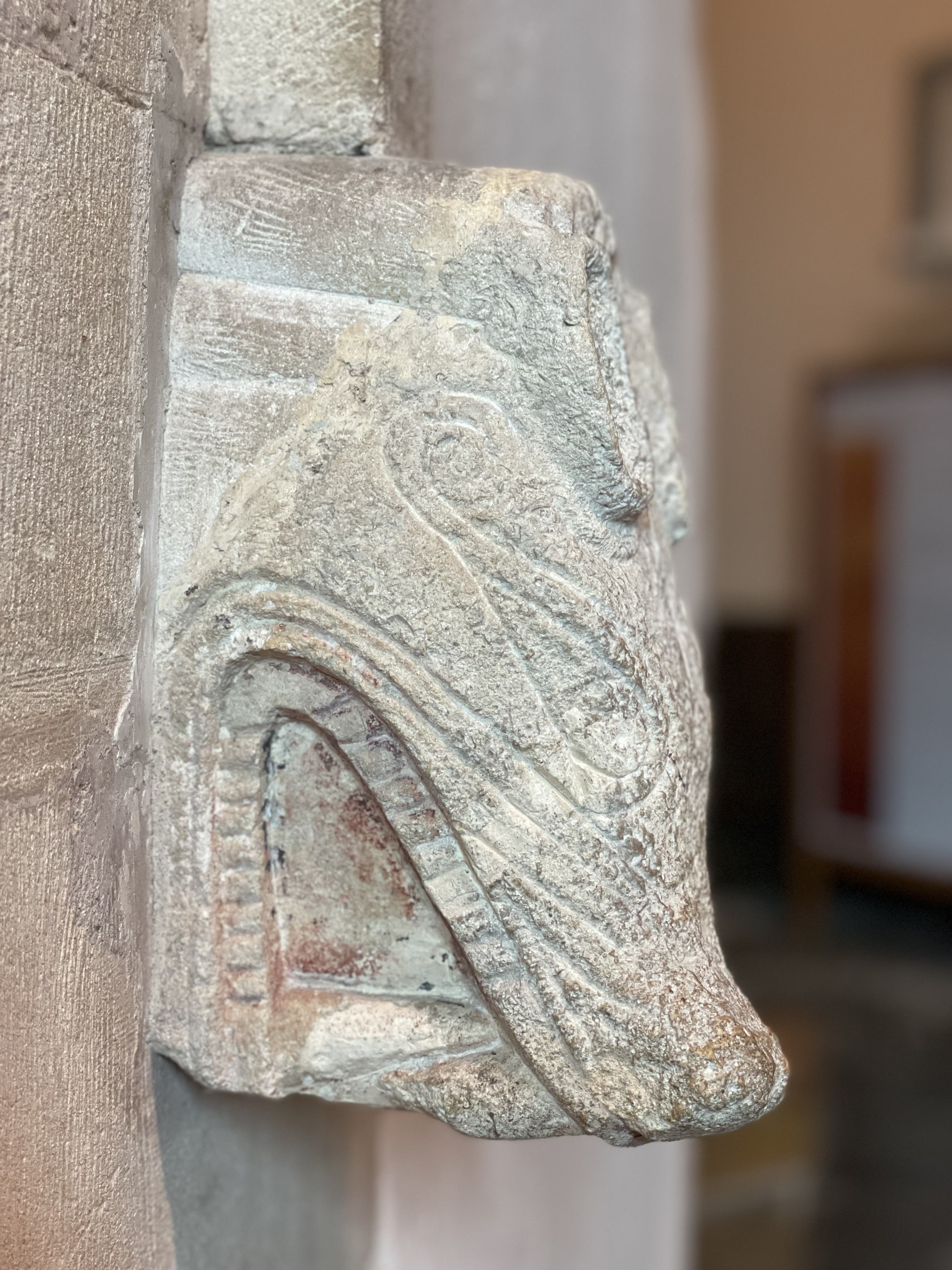
My Linktree
Genius Loci Digest - 14 Jan 2022 📸🚐🏛 | Revue
My Link Tree
Thanks and see you next Friday.


Member discussion